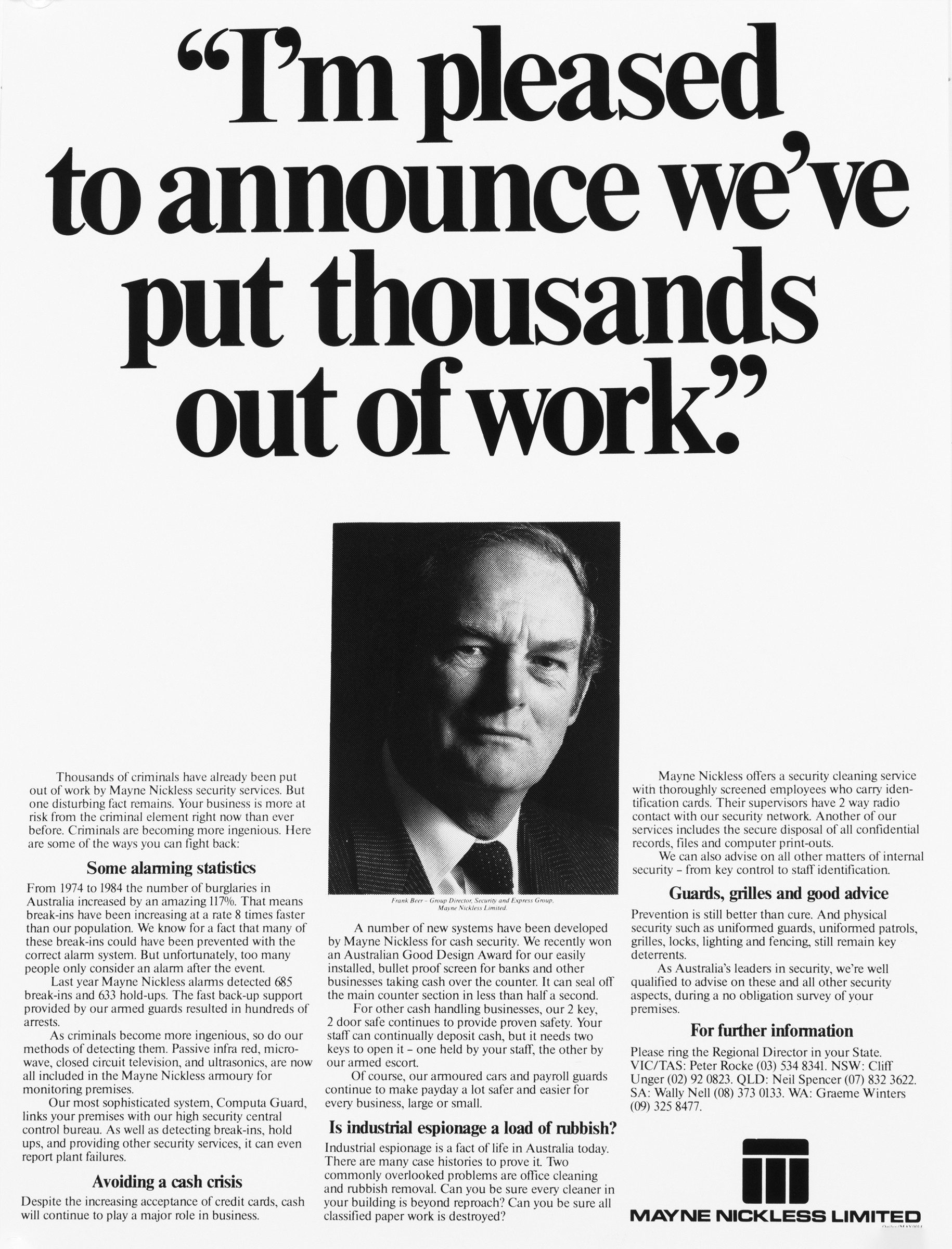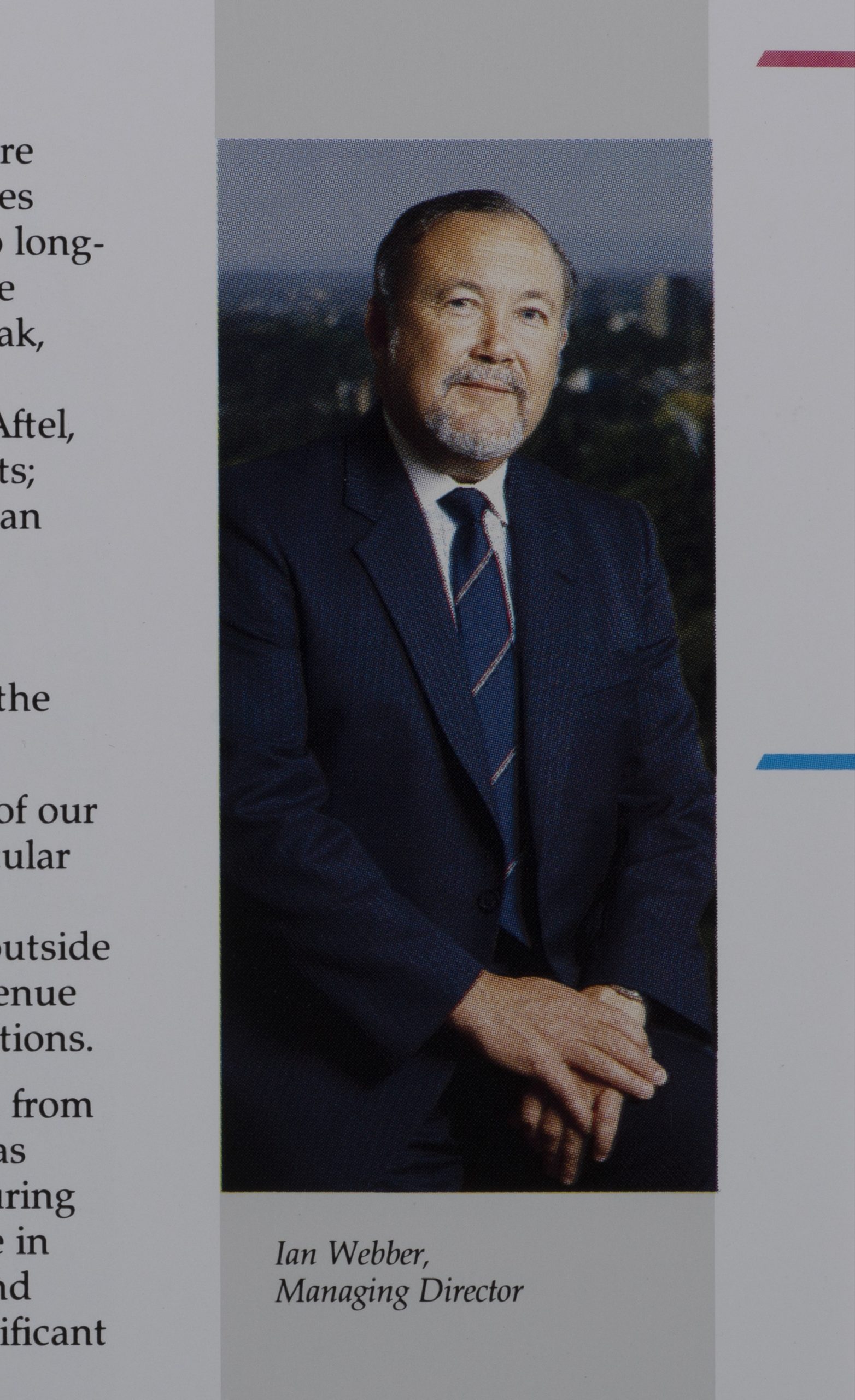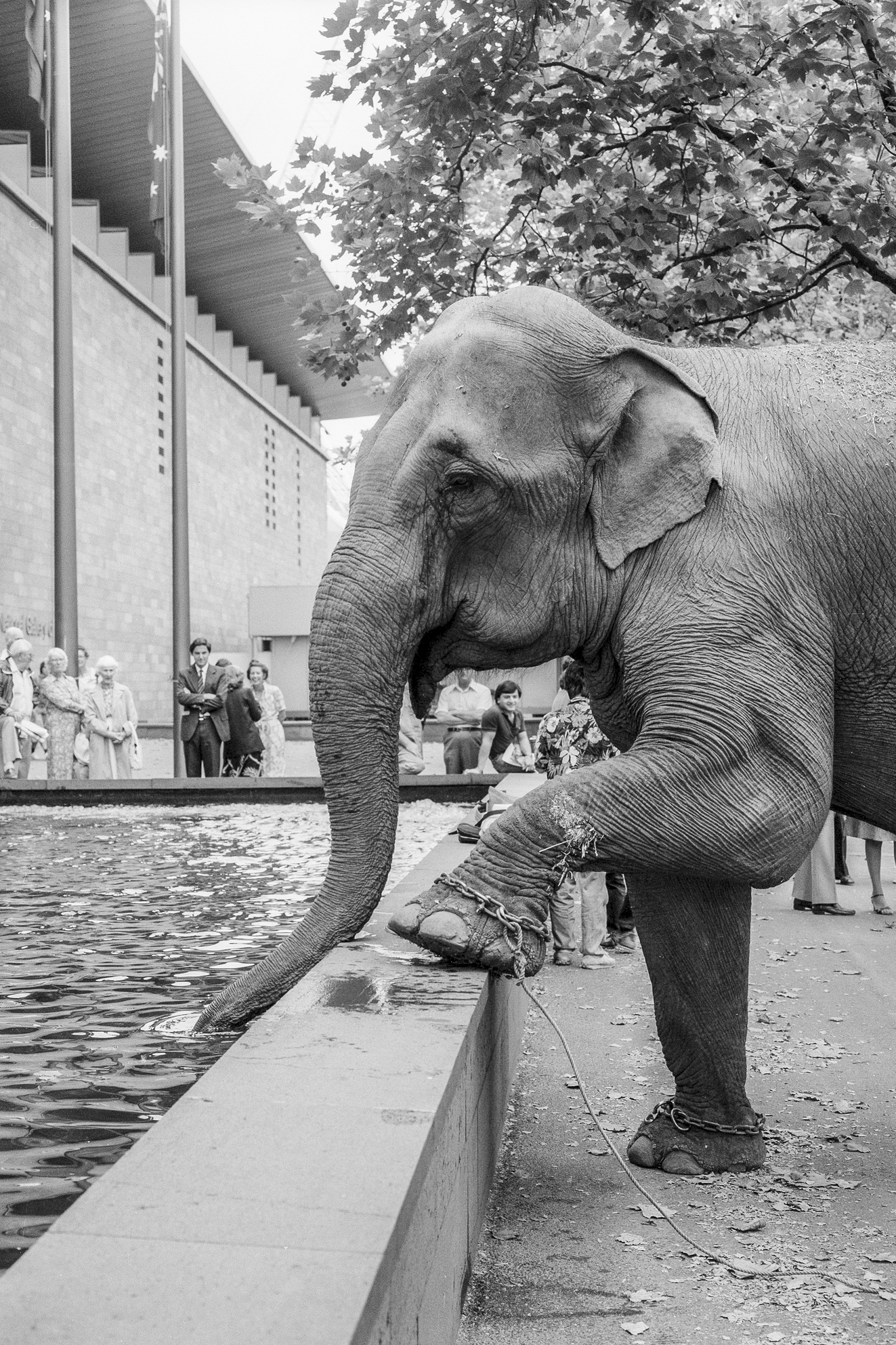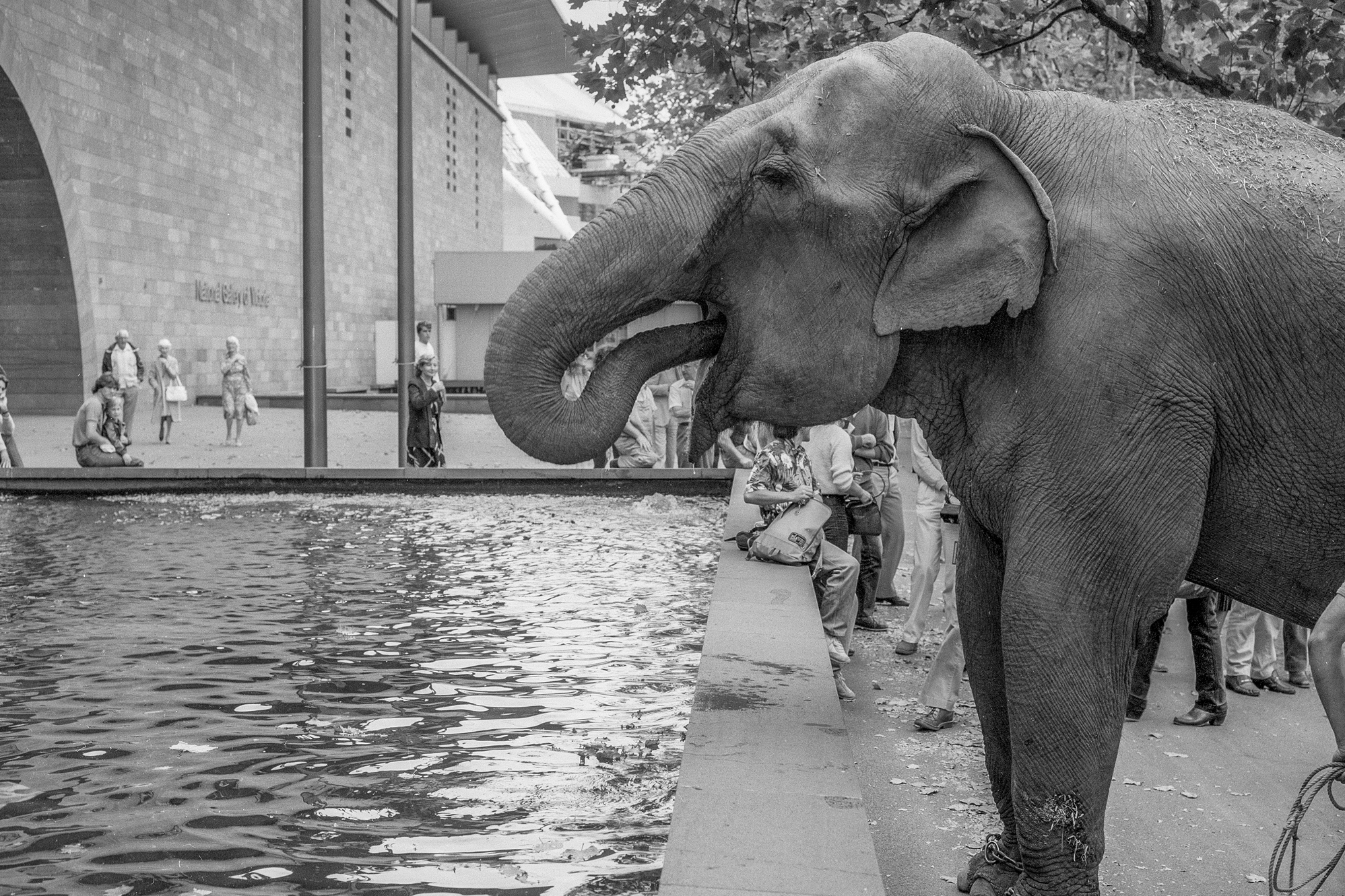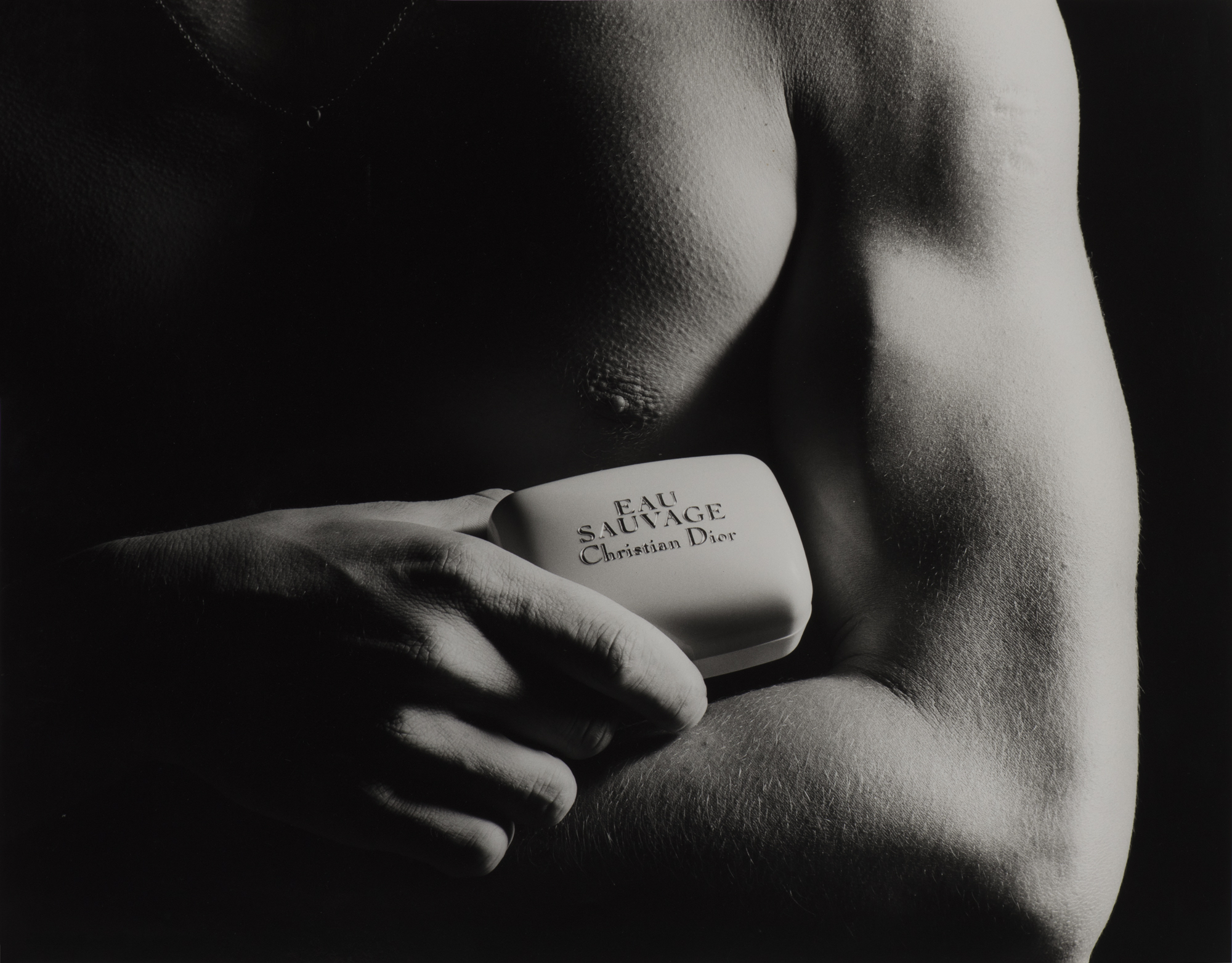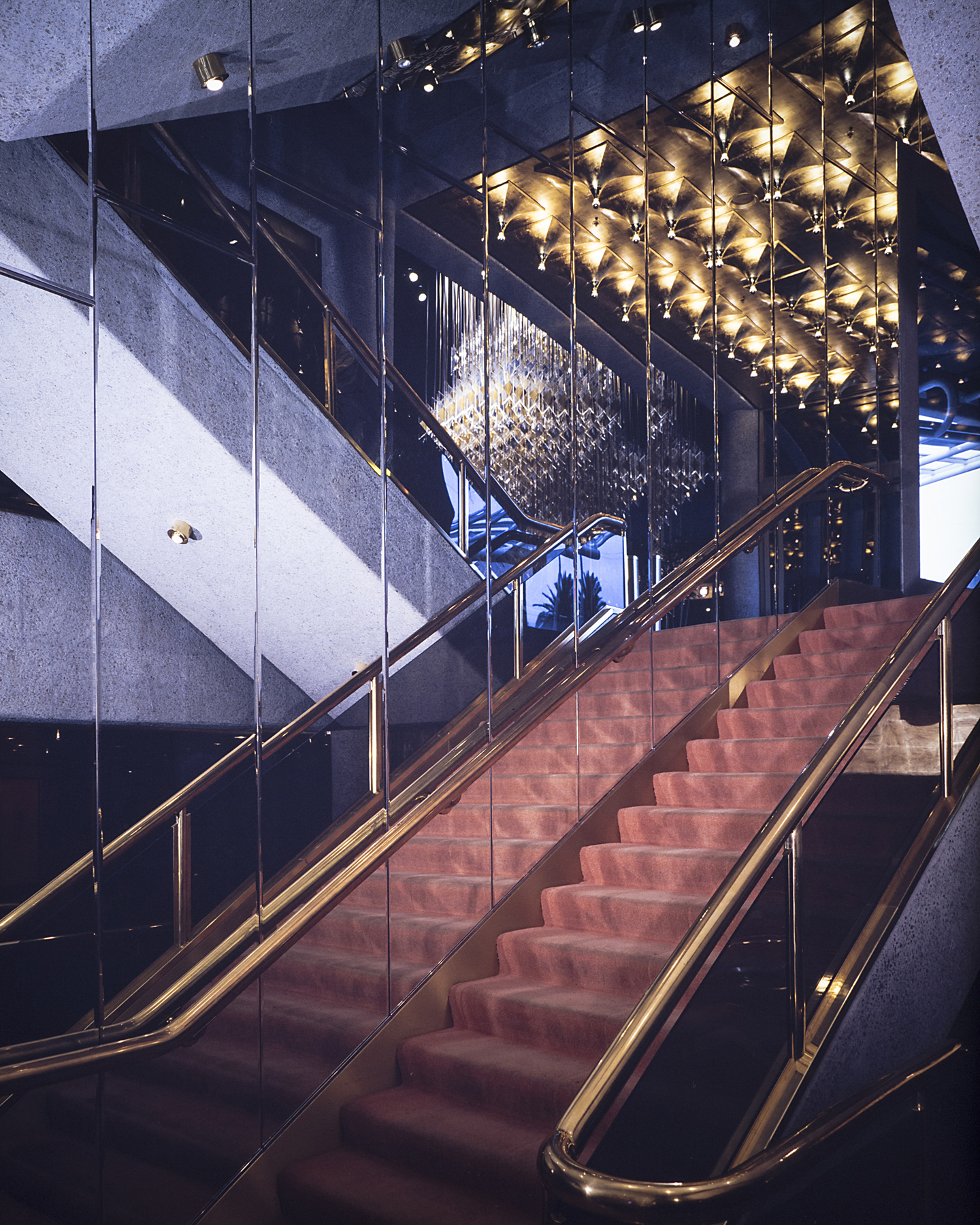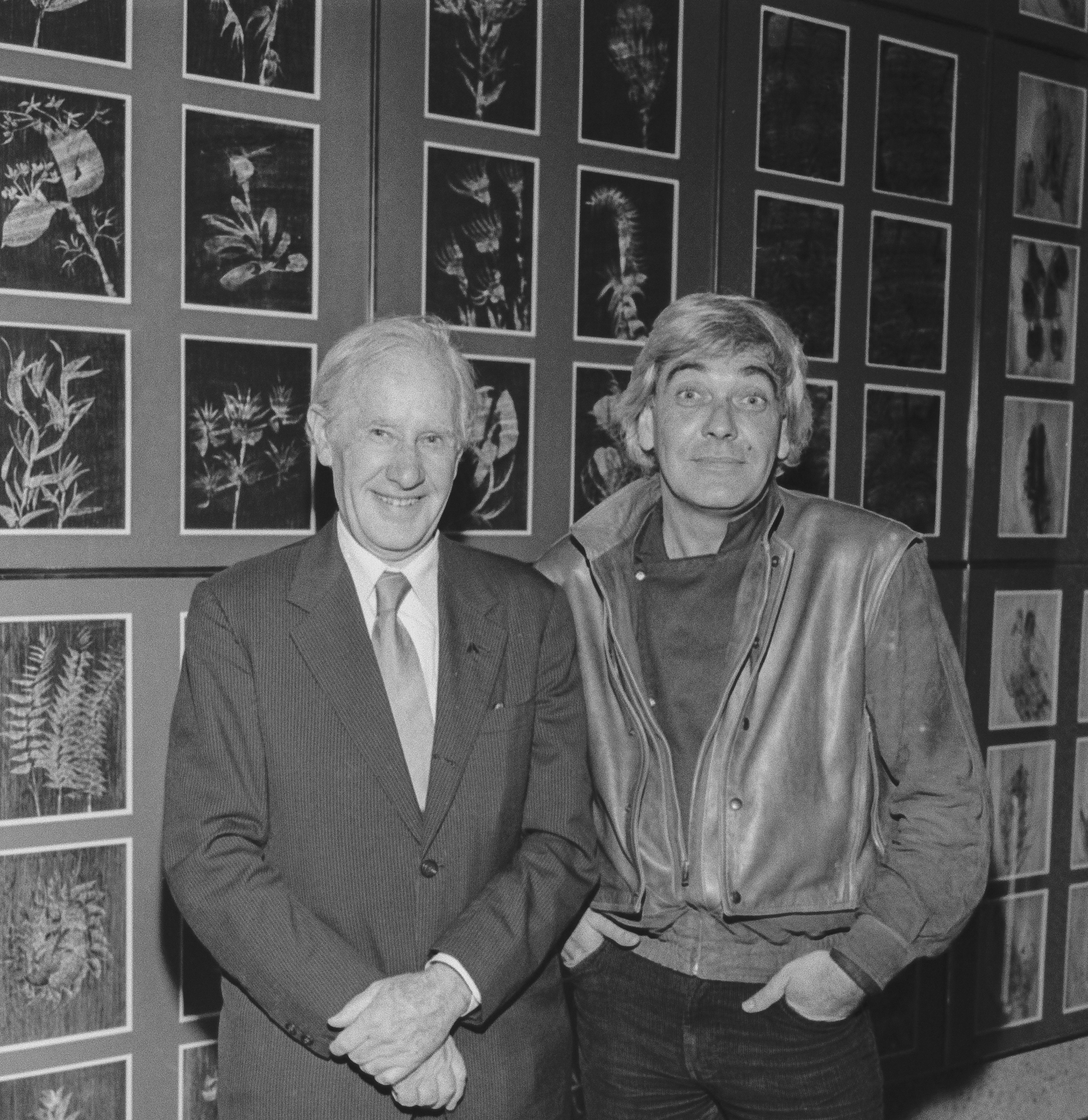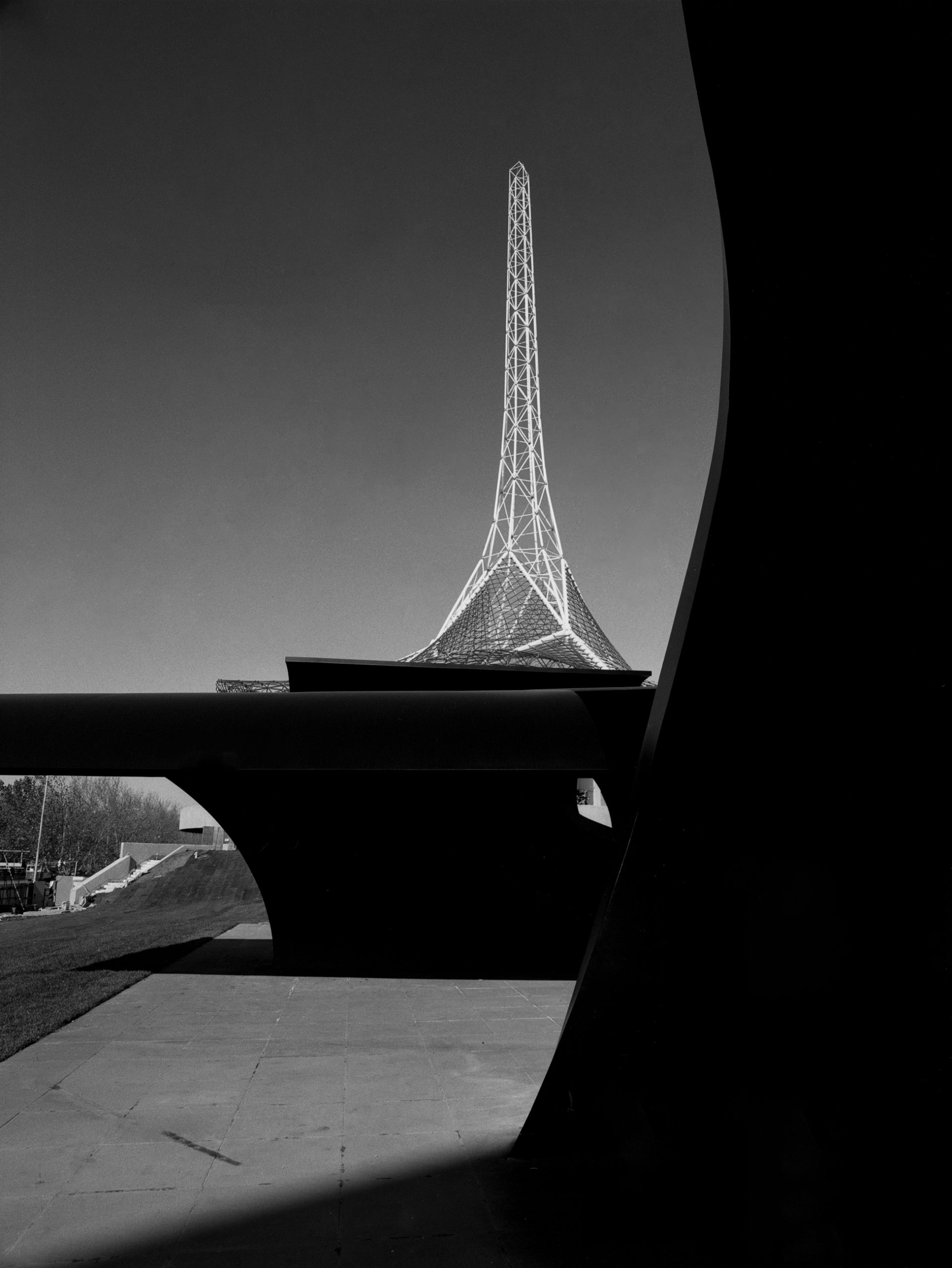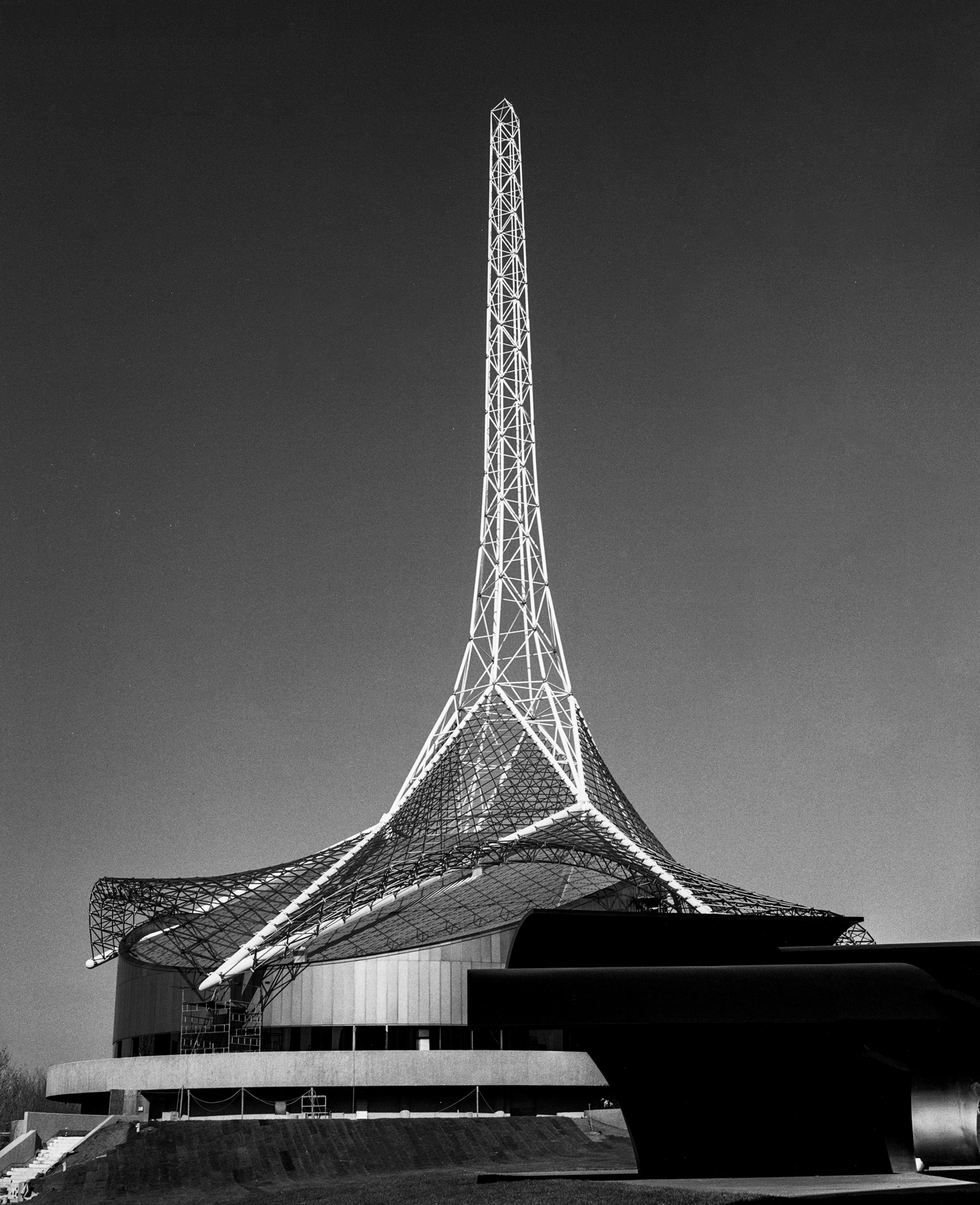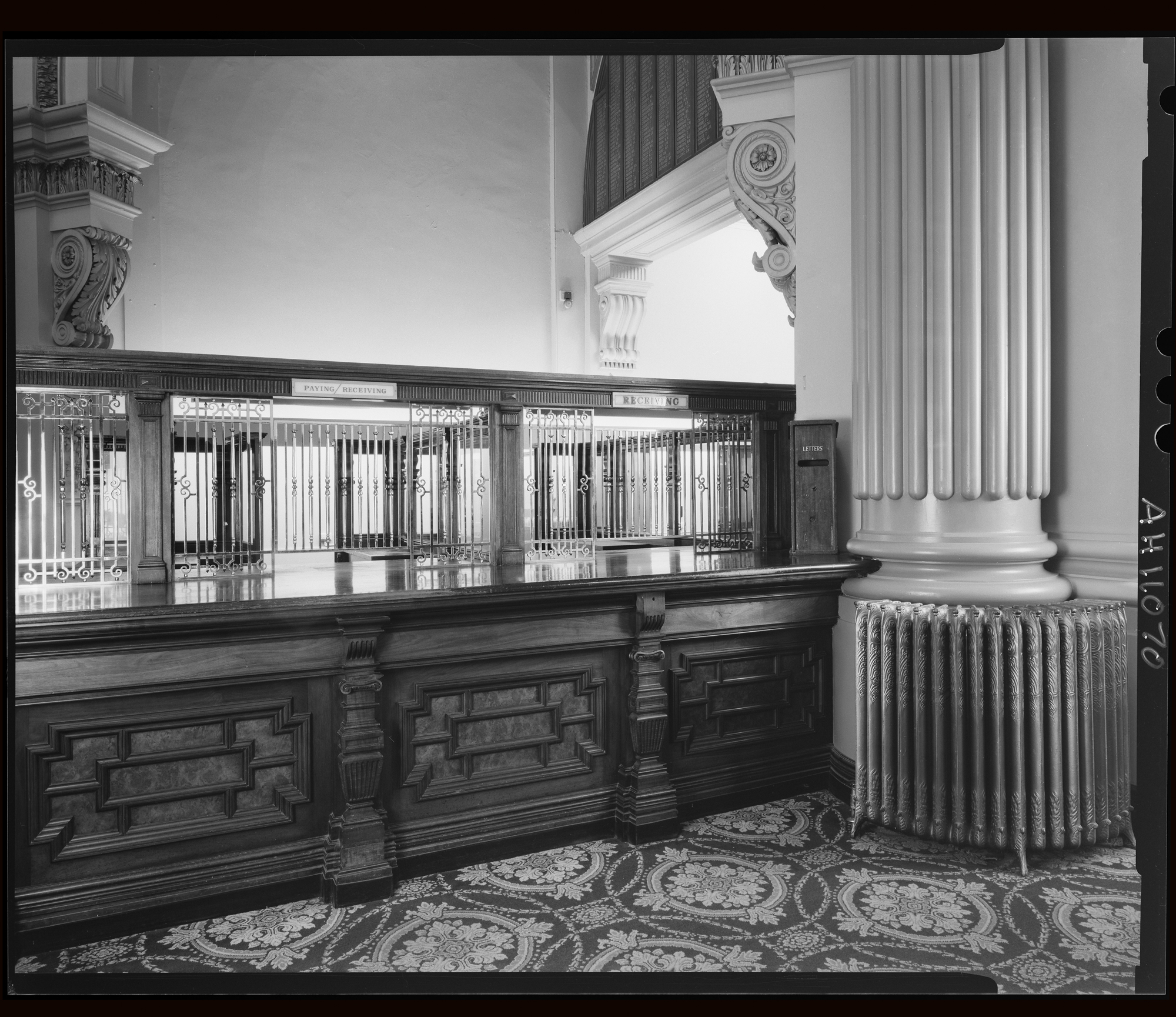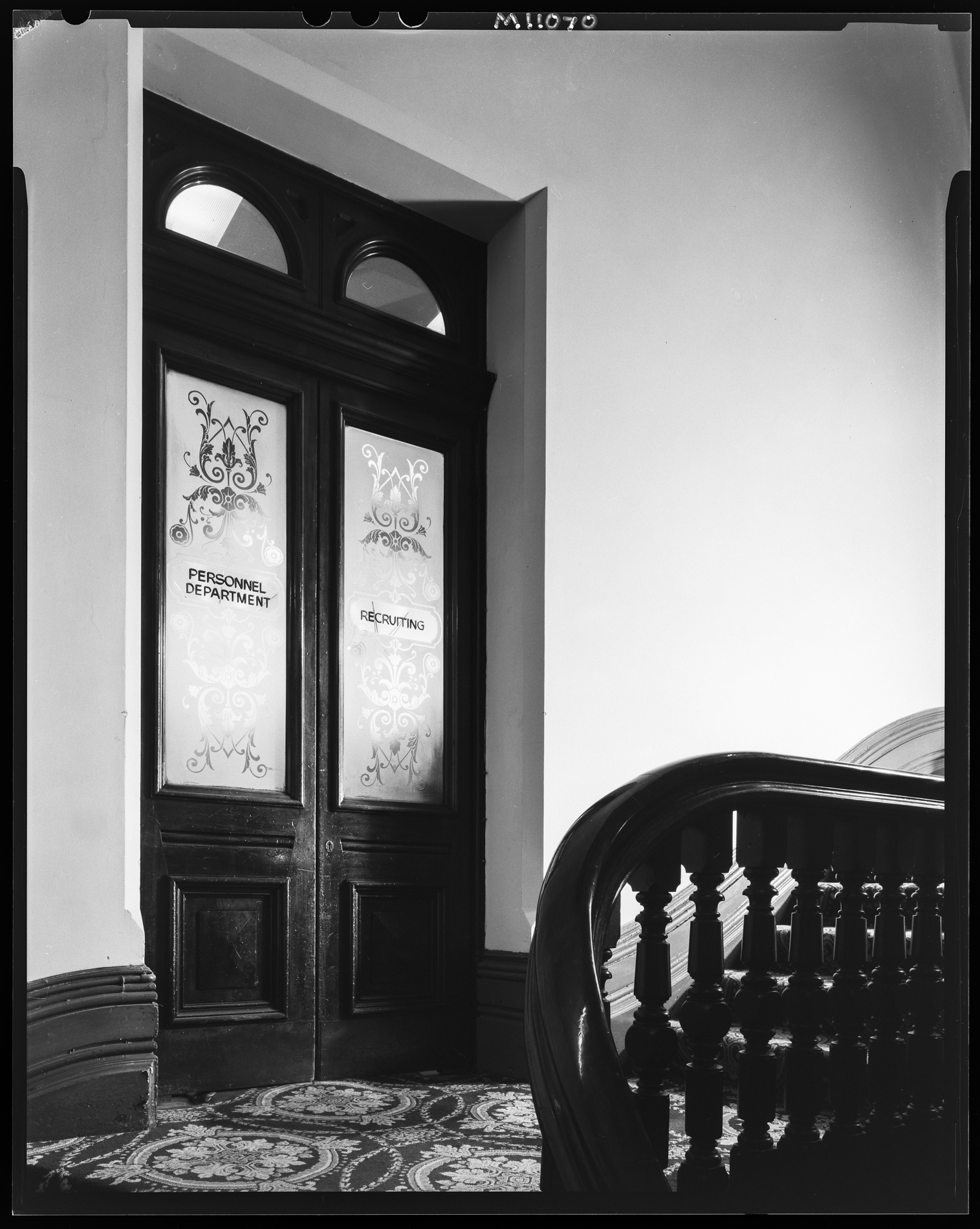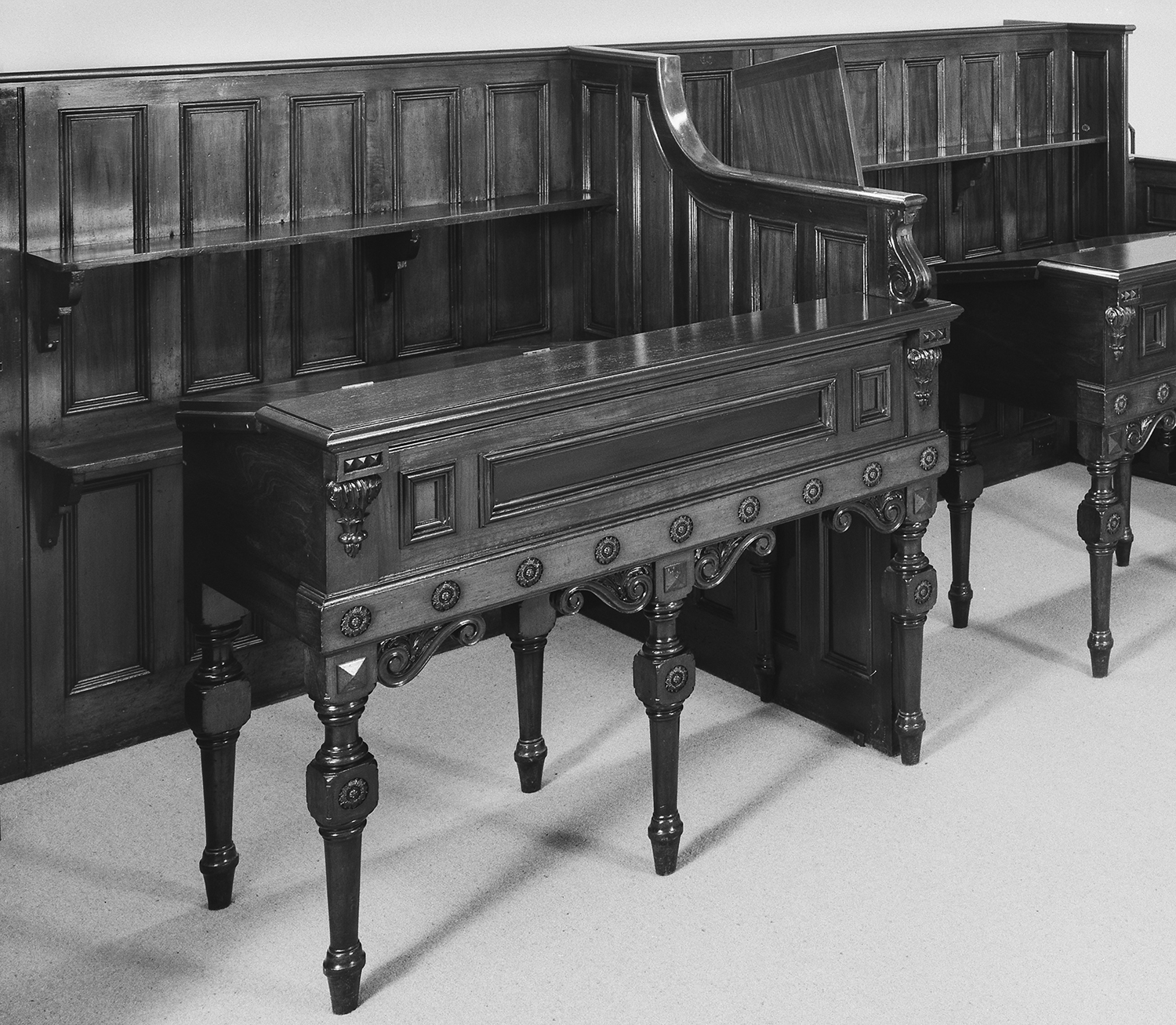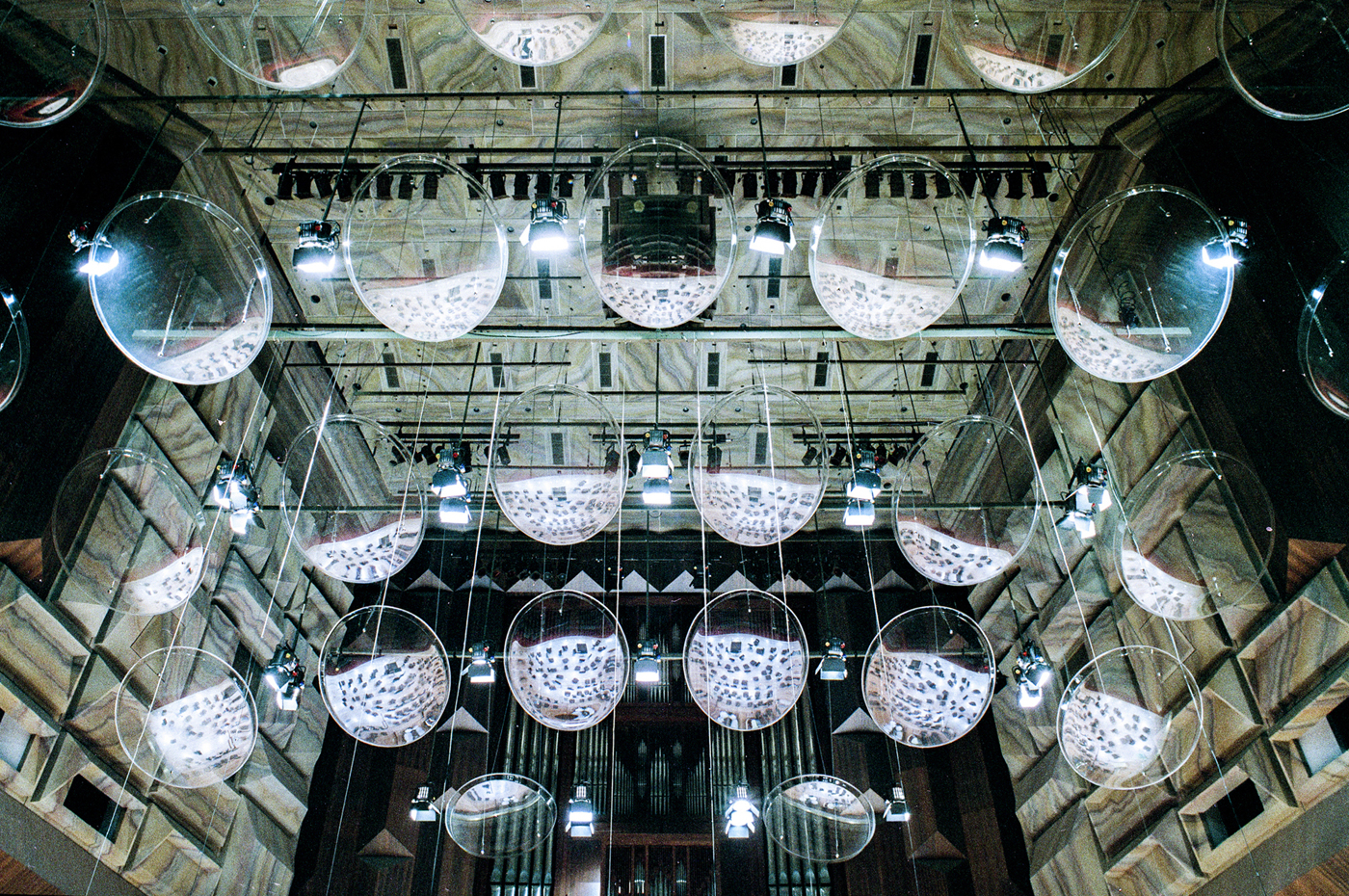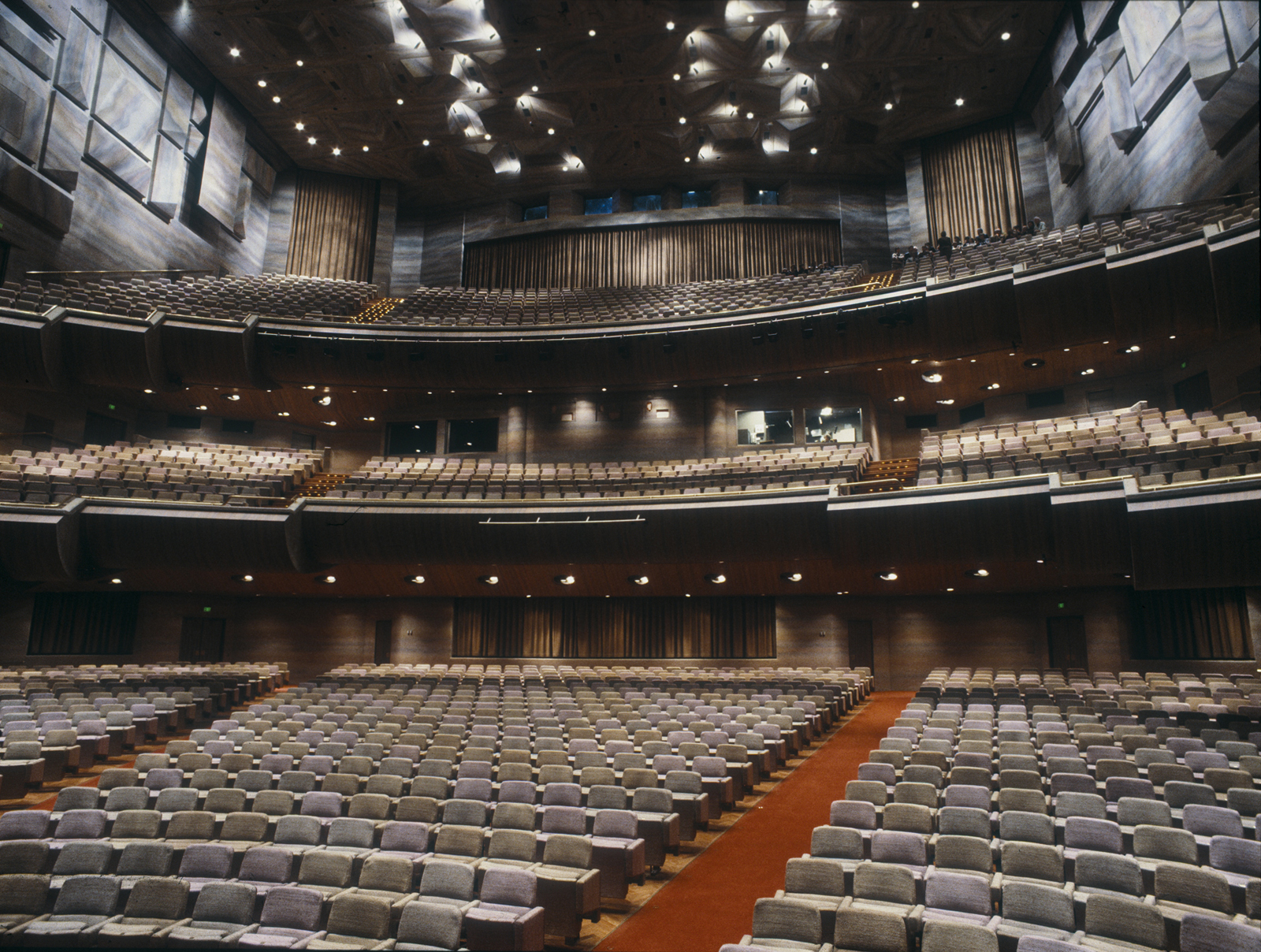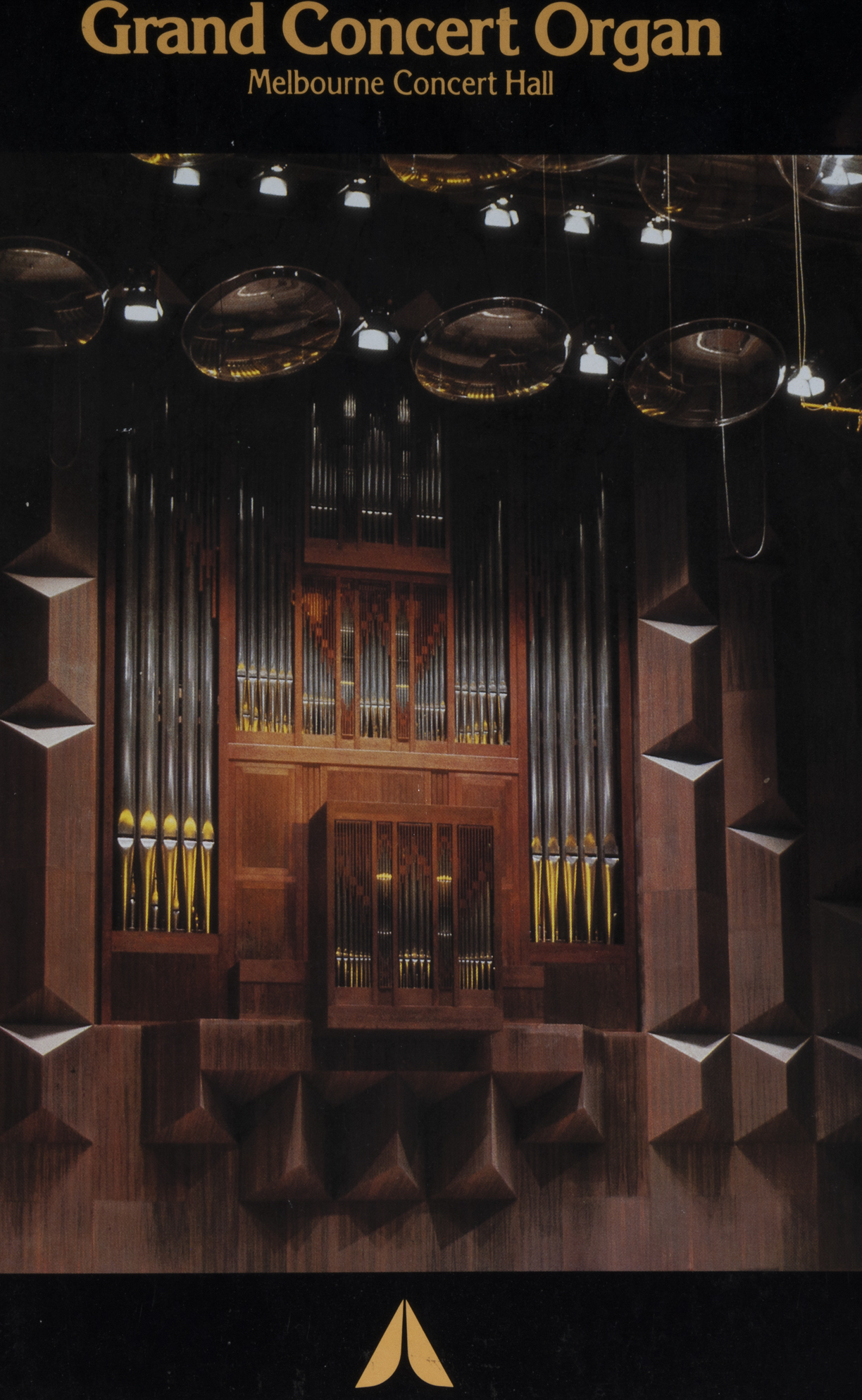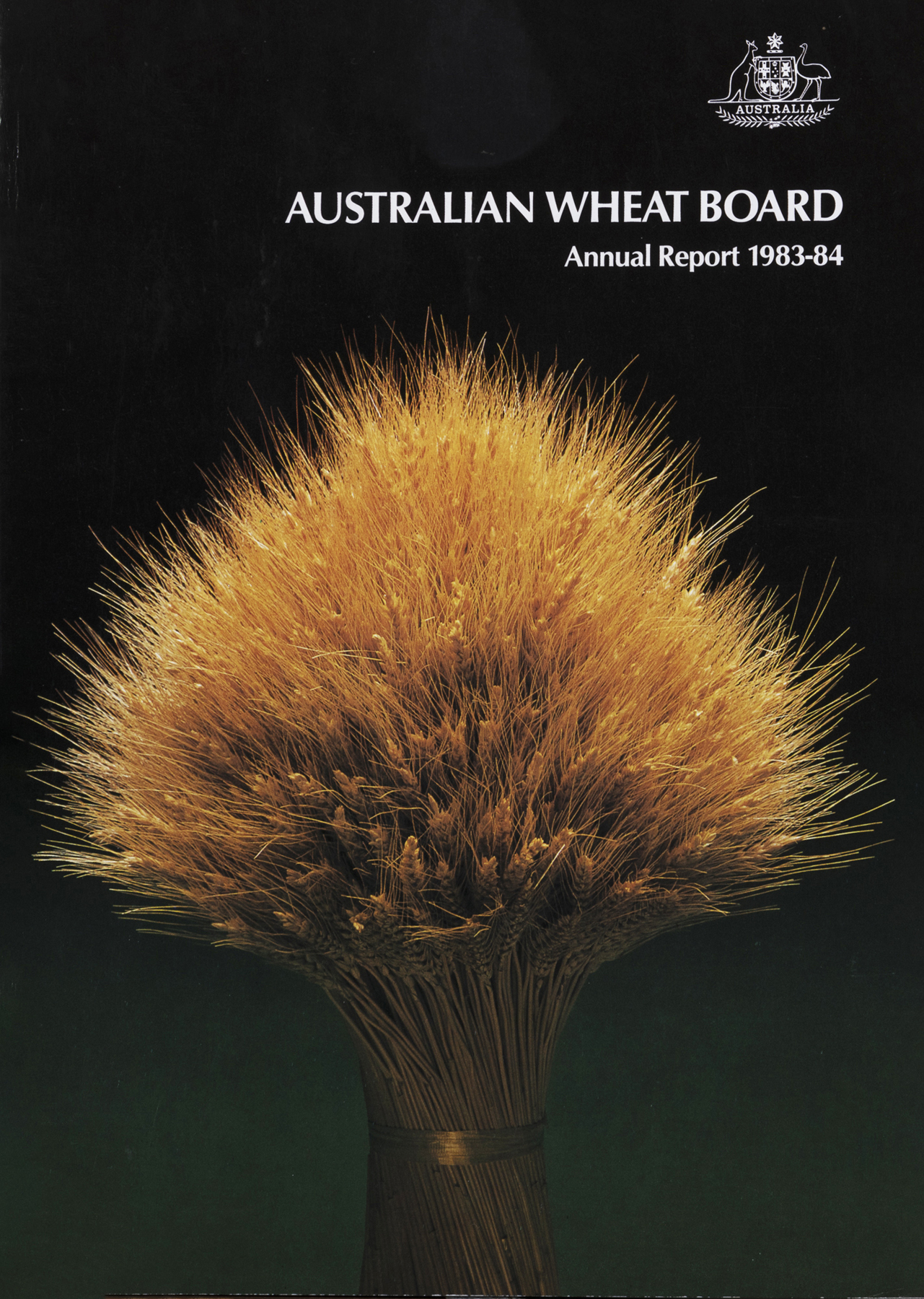Project Description
1976 Commercial work – the early years
1976 was my last year at Prahran College of Advanced Education [PCAE] and I was still employed part time in the darkroom of Athol Shmith/John Cato/Peter Barr. When the photographers were all booked, I was allowed out of the darkroom and trusted with fairly minor jobs. The first of these was for Ansett Airlines [a major client of Peter Barr]. The assignment was on the tarmac at Tullamarine photographing a sea lion who was being flown [by Ansett] from Antarctica to a sanctuary[?] on the Gold Coast.
From the moment I entered PCAE I was breaking my neck to work commercially. At the end of 1976 Peter Barr bought out Athol Shmith and John Cato. The name disappeared. Peter Barr and Associates was created. Peter invited two photographers to freelance out of his new studio, Rick Wallis and me. This was a huge break. Peter very kindly gave me work when he was double booked [for which I remain extremely grateful]. Often the jobs would be public relations and in the 1970’s mainstream press photographers covered those assignments as well. I did a lot of those jobs for Peter and I never saw another female photographer. Not once. Ponch Hawkes, one of the few female photographers also working at that time [1970’s], told me recently that in 20 years of photographing rock bands she never saw another female photographer. Photography was an extremely male dominated industry, and corporate industrial photography [which I wanted to break into] was 100% male dominated.
It was tough.
Working as a freelance it was standard practice to phone potential clients asking to show them my folio. Mainly they said no but occasionally I got a yes — and very gradually I established a client base of people who believed in me, supported me. It took about three years. In the meantime I taught one morning a week and had various small clients [eg Wendy Waters, Principal, Hadfield Primary School who introduced me to other school principals who also gave me ongoing small photographic assignments]. And assignments for Peter when he was double booked.
I want to acknowledge the following clients who made such an extraordinary difference to my career, back in those very difficult early years and continued to support me into the future.
Dianne Cummins, Hewlitt Packard, who kindly recommended me to Tom Valenta, Mayne Nickless. Rob Gerrand, originally Australia Post then Director of Marketing, Victorian Arts Centre [now Arts Centre Melbourne]. Jim Foley, Australia Post, Gillian Sweetland, Shell. Clive Walters, State Bank, Douglas Butler, Westpac Bank. David Wischer, Australian Wool Corporation. Libby Edwards Galleries. Roger Camilleri, Australia Post.
Peter Barr with whom I worked as a darkroom and studio assistant at Athol Shmith, John Cato, Peter Barr. Peter then invited me to freelance out of Peter Barr and Associates and gave me tremendous support across so many aspects of establishing and maintaining a successful photographic business. His support was crucial and I owe him a huge debt.
Technical note: 90% of my assignments were colour transparency film. An incredibly demanding film with a tolerance of 1/3rd to possibly ½ of a stop exposure error. Rigorous training which was nerve wracking at the time but for which I am now incredibly grateful. The film, on a transparent base, created a positive image that was viewed on a lightbox. The image was unique and could not be changed in any way. At all. Once the film left the studio and was sent to the client, that was it. It was never seen again. Years and years of images I created have disappeared. Many, many other photographers are in the same situation. The very few colour transparency images I have were off-cuts – usually because of under or over exposure – but were kept because the assignment was interesting. Assignments were often briefed for both colour transparency and black and white film. The cameras [Mamiya 6-45, Bronica 6-45, Mamiya RB67], had interchangeable backs allowing both film options to be used.
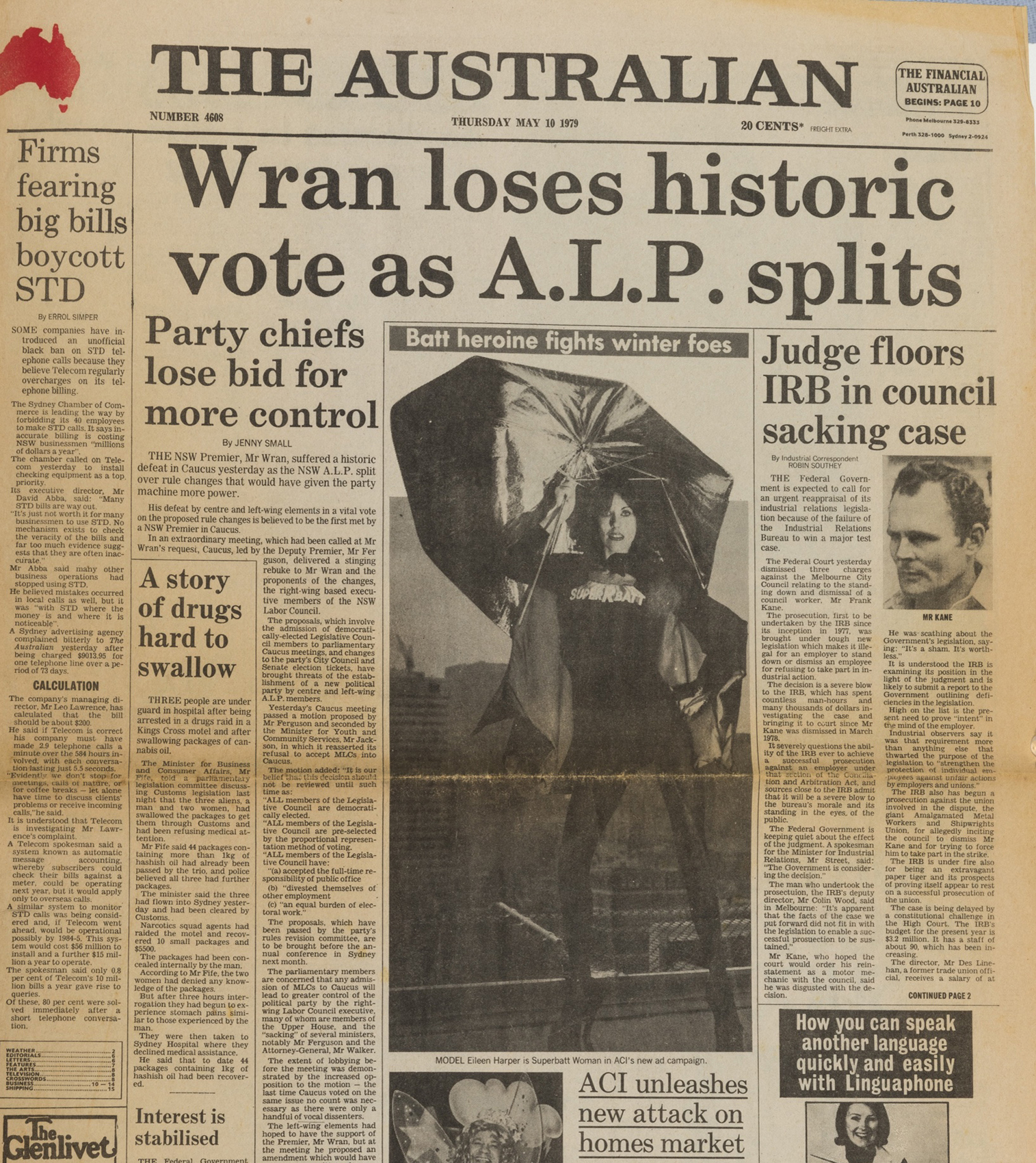
Example of the public relations photography I did whilst simultaneously showing my folio [which was pitched to corporate industrial] to as many marketing directors who would take the time to view it.
In this instance insulation batts were being launched and the PR Agency secured access to the helicopter pad on top of the Ansett building. It was pouring with rain and the wind was so strong it blew the silver studio umbrella off the spines on one side. Ric Wallis, who also free-lanced out of Peter Barr and Associates was assisting me by holding the Metz flash, attached to my camera [Mamiya 6-45] with a long synchronisation cord. For a PR photo to make the front page of a major daily broadsheet was incredibly unusual and the client – ACI – received more ‘free’ publicity than they could ever have hoped for. It is easy to deride PR photography but it is often quite challenging because the photographer has to make it happen – and like every other photograph – you have to come up with the ‘shot’. 10th May, 1979
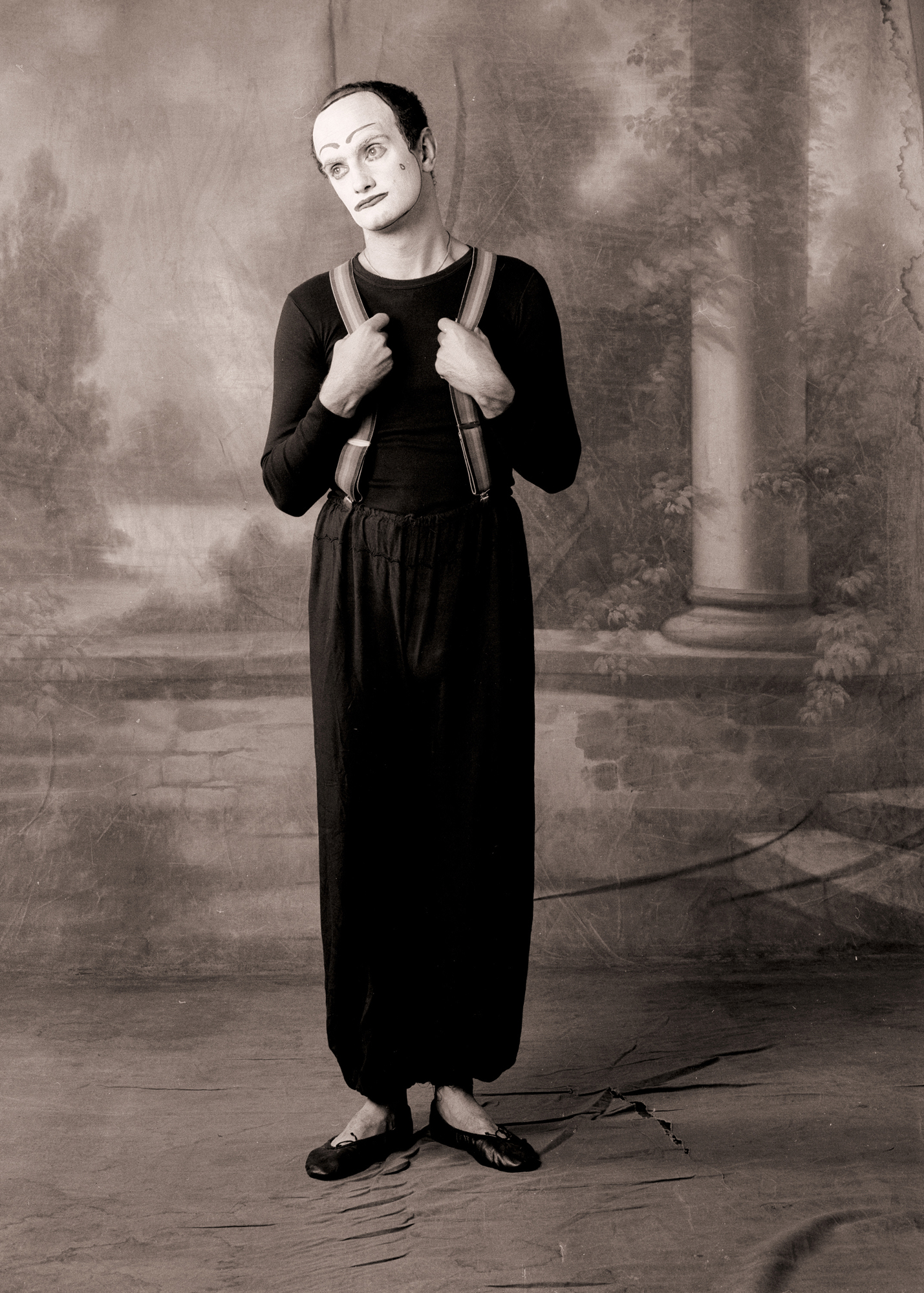
Whilst photographing the mime artist, Julie was being filmed and interviewed by Australian Film Director, Scott Hicks [Shine] for Women Artists of Australia (1981) TV series. Julie was filmed in the Peter Barr & Associates studio [from which she freelanced] at 134 Flinders Lane, Melbourne 1979. Mime artist photographed against a hand painted canvas back drop formerly belonging to Athol Shmith. Mamiya RB67
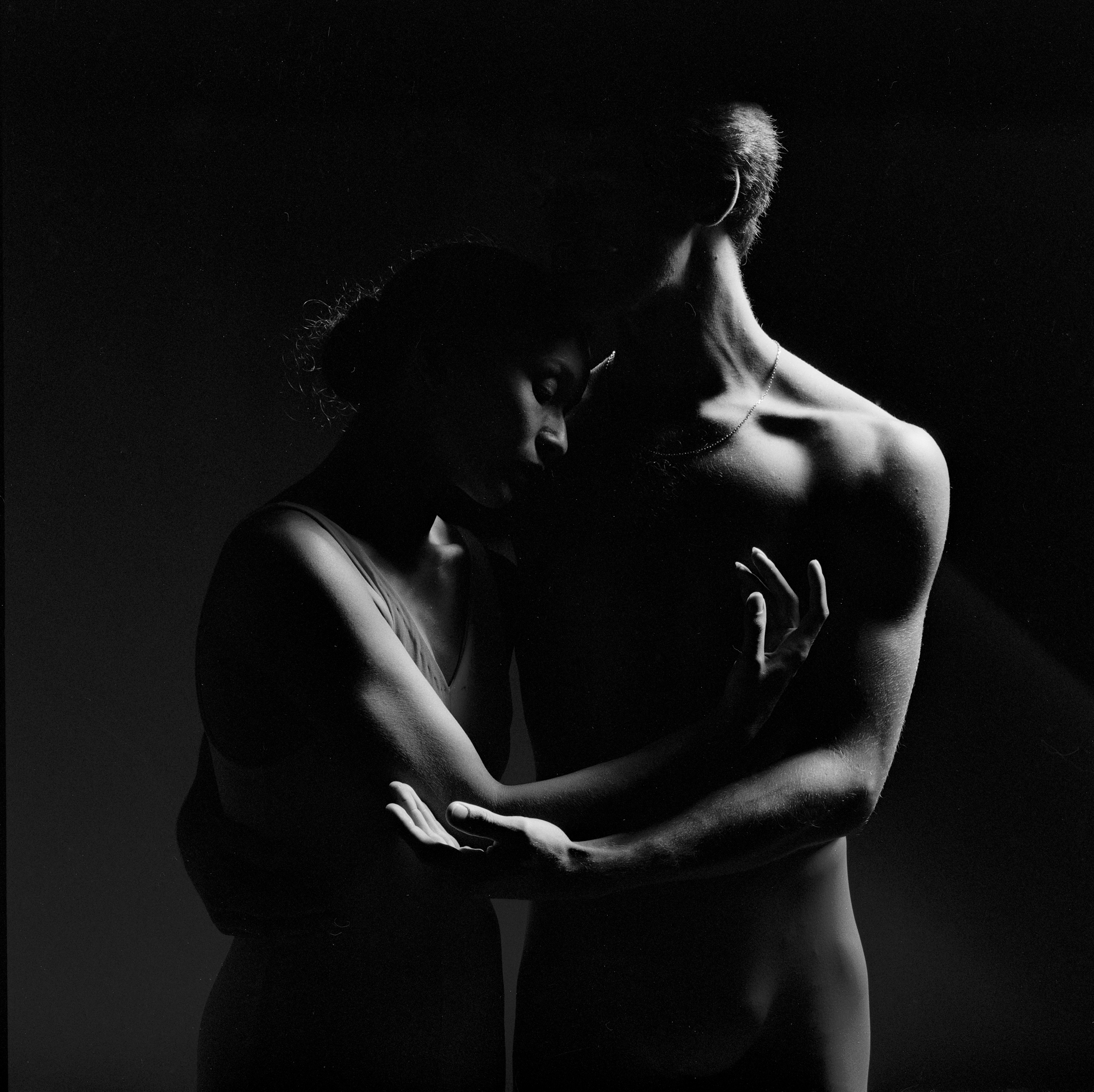
Client BP. When BP sponsored the Australian Ballet’s premier of Anna Karenina they made a poster promoting the event. To select the photographer for this commission, they asked 8 Melbourne photographers to submit one photographic print – it was film back then – to make an image of how they would approach the assignment should they be selected.
There was no payment for this request.
I was the only female photographer asked to submit and I was selected. Not sure how. When they called me in to tell me I had been successful they showed me the 7 other submissions – all from highly successful photographers with much more experienced than me.
I was lucky. This is the ‘test’ image I submitted.1979
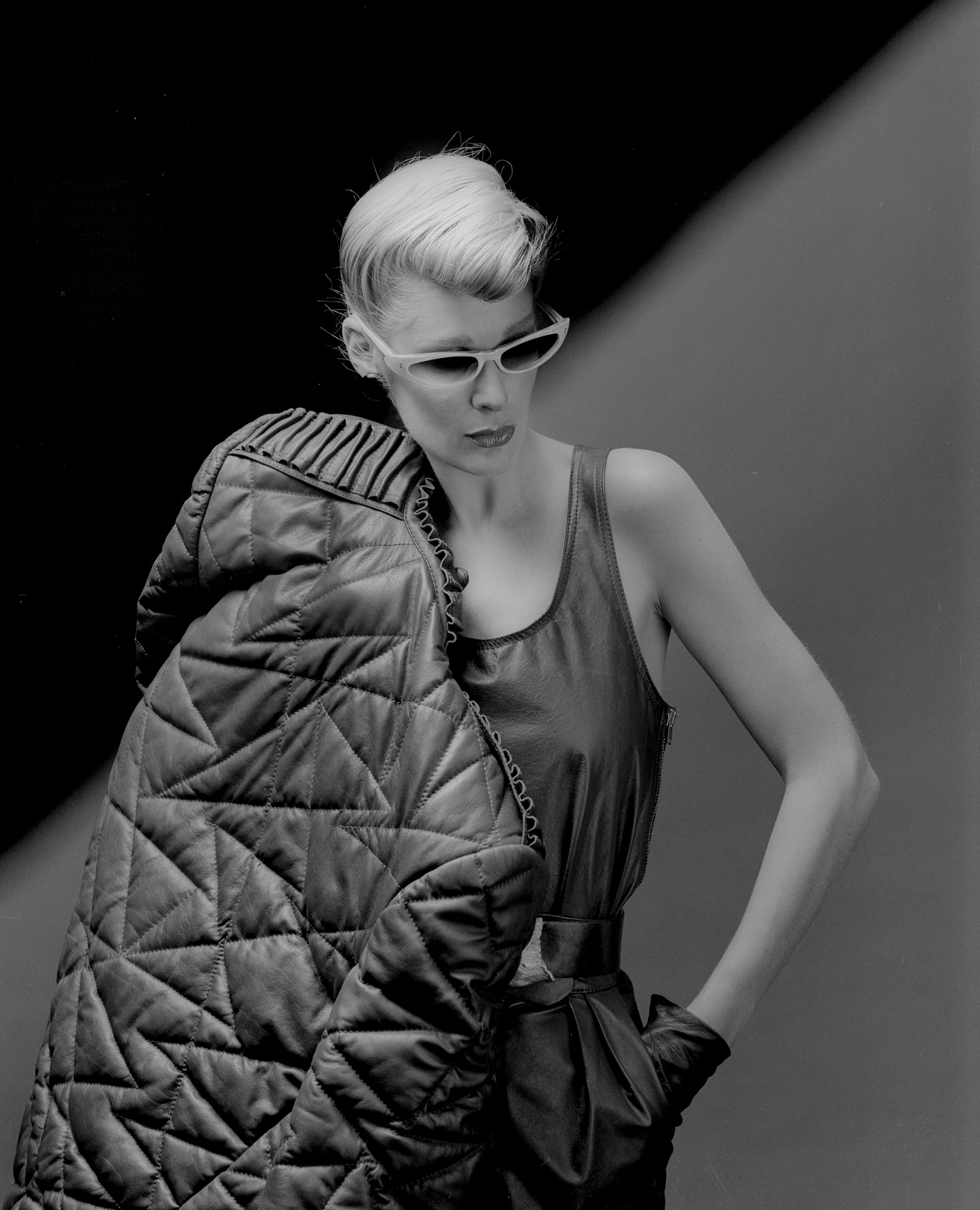
Suzy Gashler photographed at Peter Barr & Associates – from where I freelanced. Suzy wrote: “From my life before acting. Photo by@julie_millowick for @bannister.jenny jacket. Hair and makeup by me, which was often the case in those days. Thank you Julie for such a memorable shoot!” And Julie wrote: You were a fantastic model @suzy_cato_gashler.official. Stunning in fact. And so LOVELY to work with. Just a dream. So helpful and treated me with such respect when in fact I was the newish-kid on the block, only two years out of the Shmith Cato Barr darkroom. Working with you gave me confidence and I will never forget that. Ever. Thank you again Suzy. Flinders Lane, Melbourne, 1979 Mamiya RB67

Client Shell. Gillian Sweetland, Marketing Manager, Shell Petroleum commissioned me to photograph the new Shell tanker – Conus – on her maiden voyage as she sailed through Pt Philip Bay to Geelong wharf. Shell arranged for me to photograph from one of the Pt Philip Pilot Launches. I was actually TIED to the front of the launch [which most certainly would not happen now]. It was like having buckets of water thrown over me. A crew member repeatedly brought out a dry Mamiya 6-45 camera and carried my sopping wet one back into the launch where my brilliant assistant, Jim McFarlane, knelt on the floor unloading film, drying cameras, lenses, film backs etc. Patrick McDade, coxswain repeatedly circled the Conus again and again and again allowing me to photograph the tanker from all angles. At one point I asked for a 35mm camera with B&W film and made this image for Patrick and myself. Shell never saw the photo. Pt Phillip Bay, 1981 Julie Millowick archive, State Library Victoria
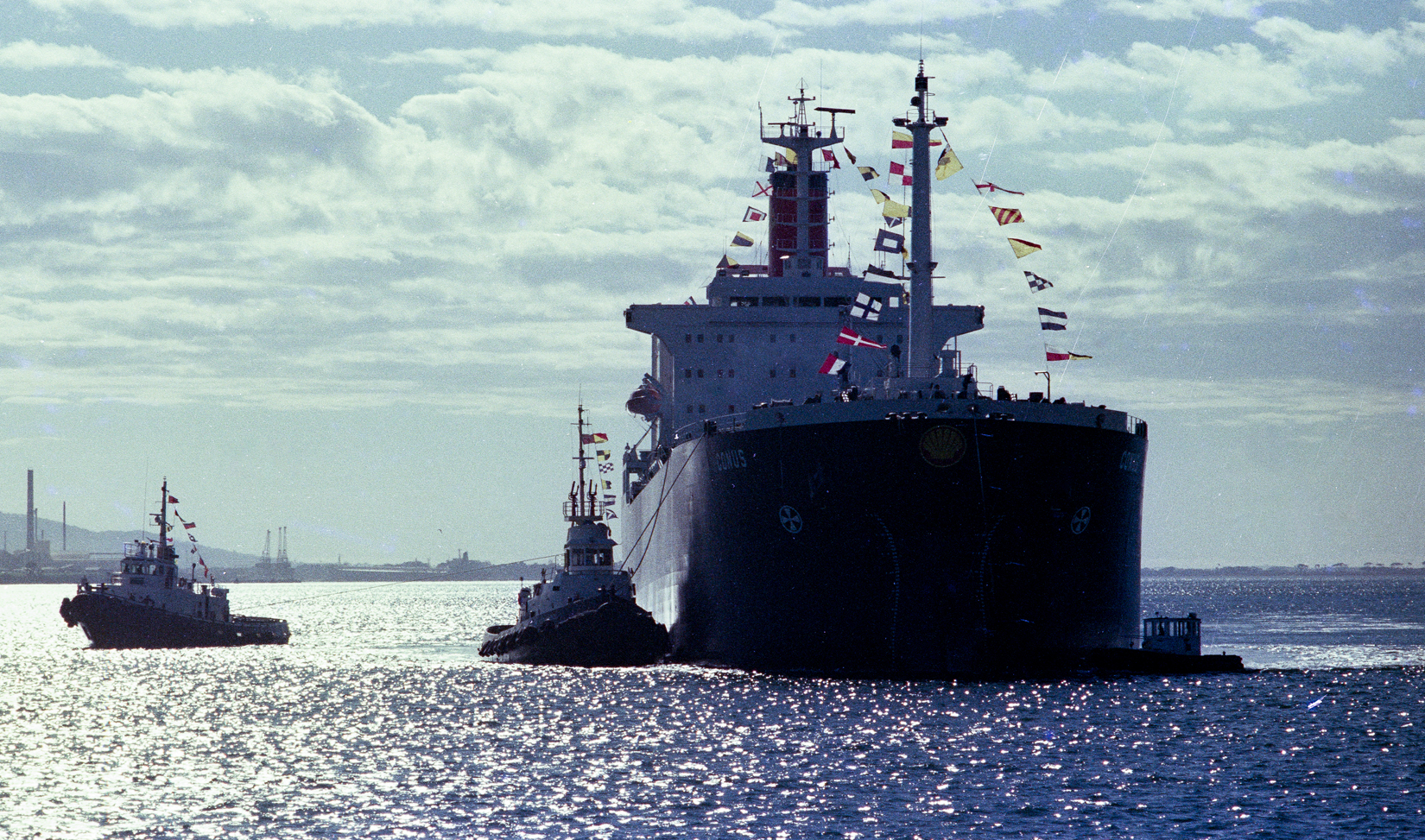
Client Shell. Shell oil tanker, Conus, approaching Geelong. Photographing into the sun, I was forced to work with a silhouette. One of the few occasions the client asked for colour negative – it was usually colour transparency. Negative deterioration, not spotted. Mamiya 6-45, Geelong, 1981 Julie Millowick archive, State Library Victoria
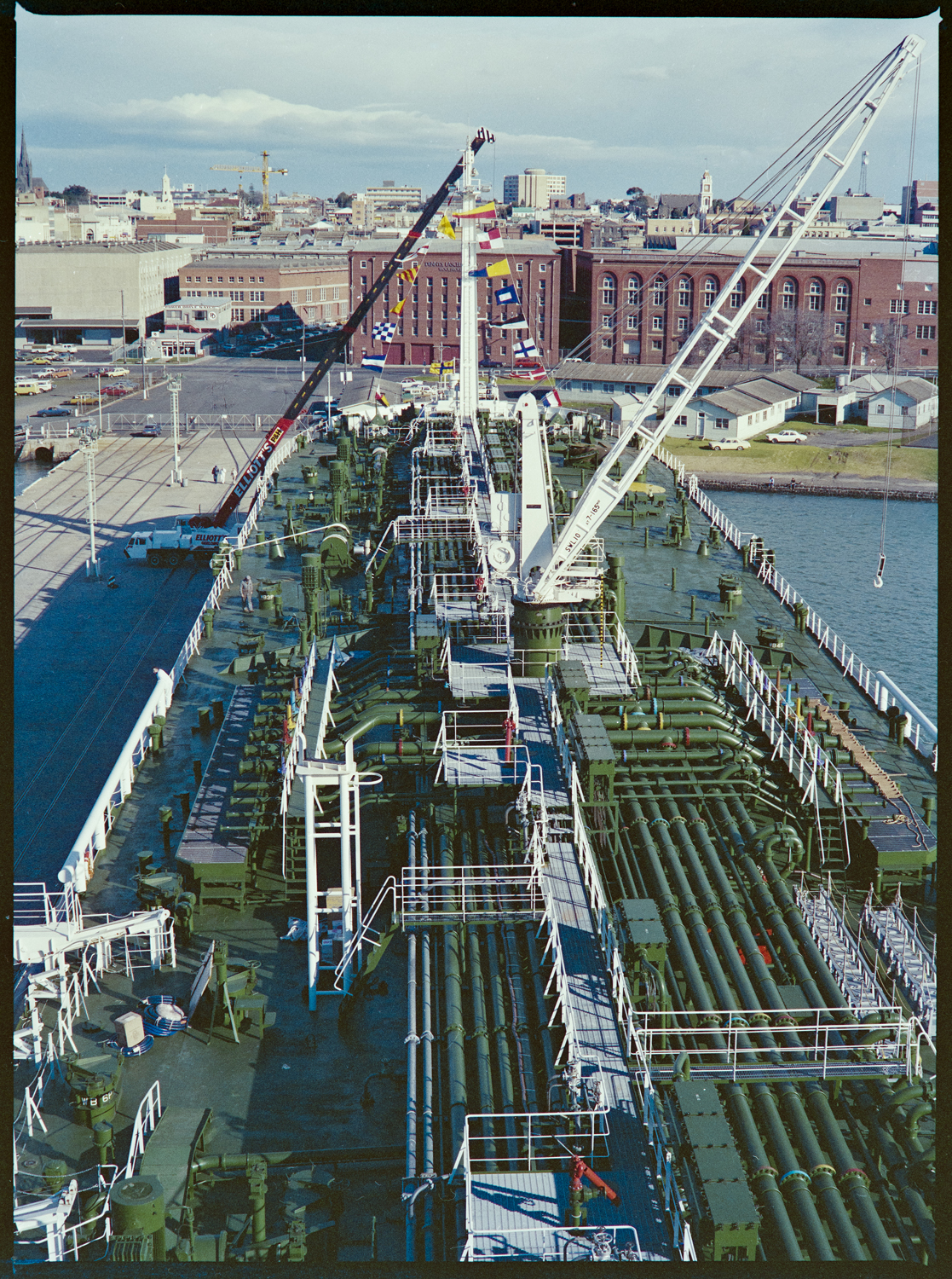
Client Shell. Shell oil tanker, Conus, approaching Geelong. Photographing into the sun, I was forced to work with a silhouette. One of the few occasions the client asked for colour negative – it was usually colour transparency. Negative deterioration, not spotted. Mamiya 6-45, Geelong, 1981 Julie Millowick archive, State Library Victoria
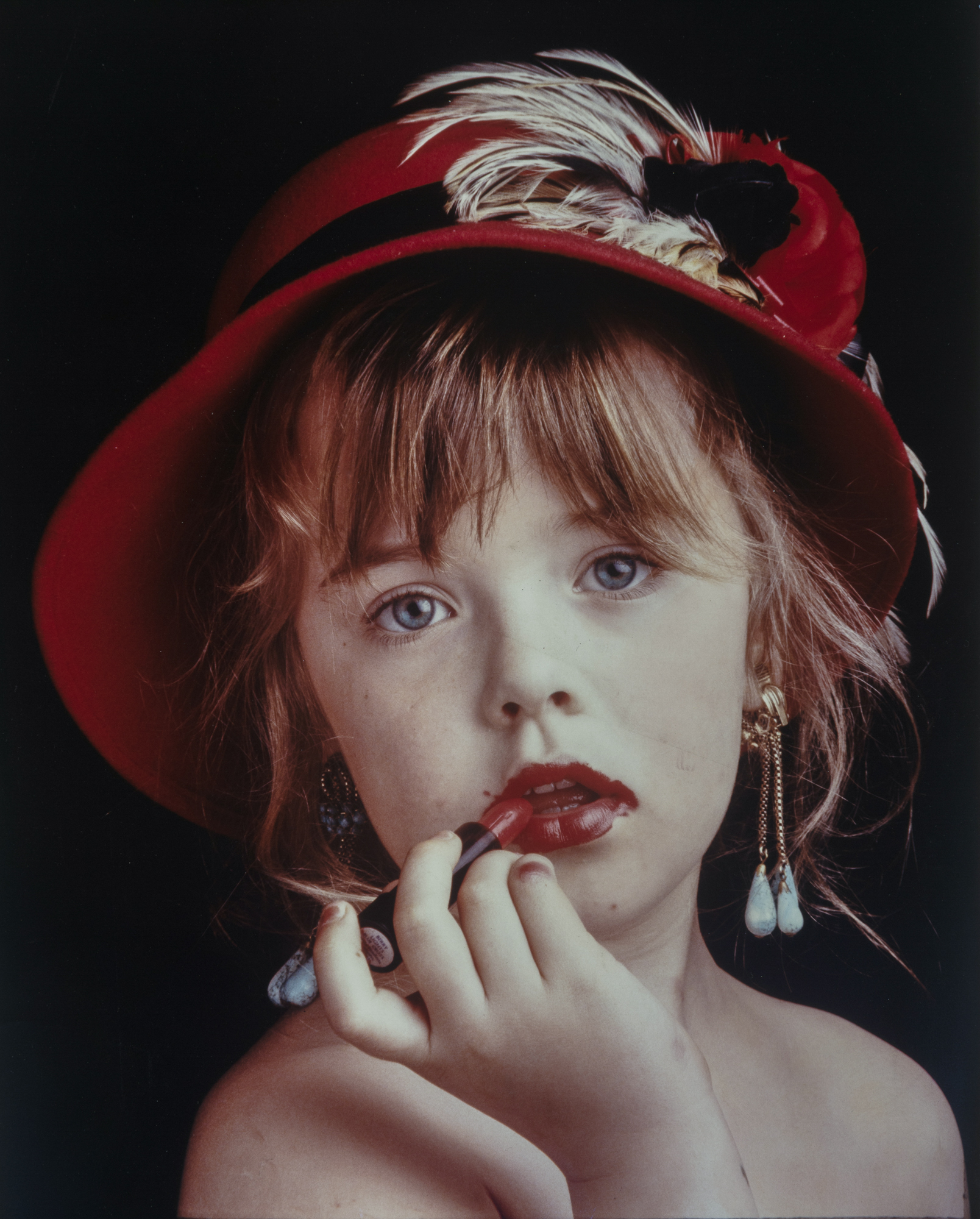
A corporate magazine wrote a story about the components used in lipstick. My commission was to produce a photograph that would appeal to a broad audience that said ‘lipstick’. I brought a young model into the studio, let her loose with a box of ‘dressing up’ clothes then she sat in front of the camera -and used her reflection in the lens to apply her lipstick. circa 1980. Colour transparency, Mamiya RB67
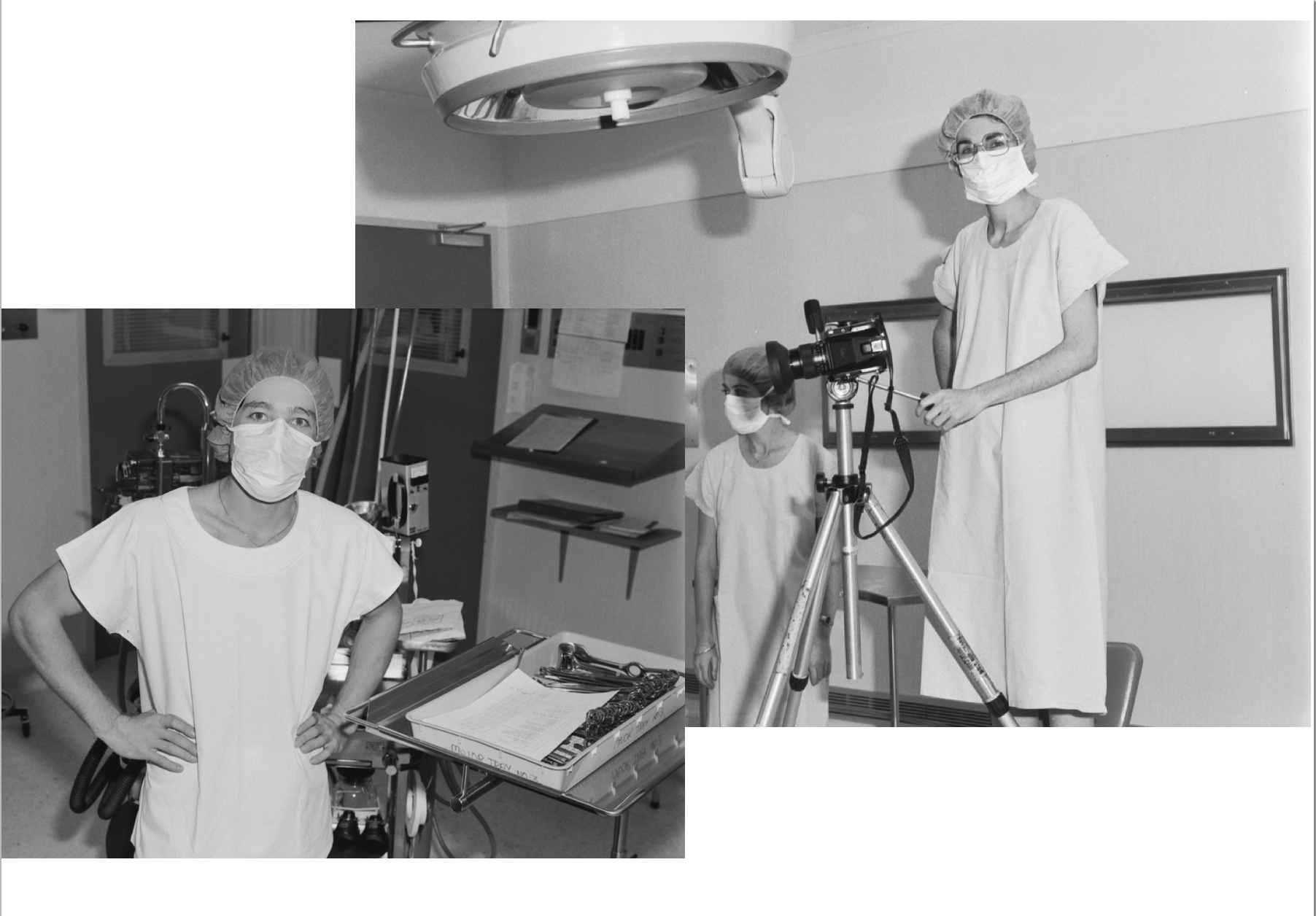
Client PR Agency working to promote surgery at private hospitals. The assistant, Mark Coulson, and I visited 4 private hospitals during a very busy day. Starting in Malvern we photographed a breast reduction and culminating at Epworth where we photographed an ambulance, then a bone that was taken from another part of the body and put it into the jaw. Finally the removal of eggs for an IVF procedure. Whilst waiting for the IVF operation Mark placed a black & white film back on the Bronica 6-45 and we photographed each other. All client imagery was colour transparency. Richmond, 1982

Client Mayne Nickless. Intermodal, a subsidiary of Mayne Nickless, Footscray, Bronica 6-45 colour transparency. Mayne Nickless was my biggest client. 95% of the assignments were colour transparency and when that unique film stock was couriered to the client it was never seen again. Occasionally I had off-cuts, but that’s all that is left.

Client Arts Centre Melbourne. Every 6 months, on a Sunday, During construction of Hamer Hall, the public could join a conducted tour to view the progress. Tour was led by the Arts Centre General Manager, George Fairfax. They were very popular. 1981, Bronica 6-45 Julie Millowick archive, State Library of Victoria
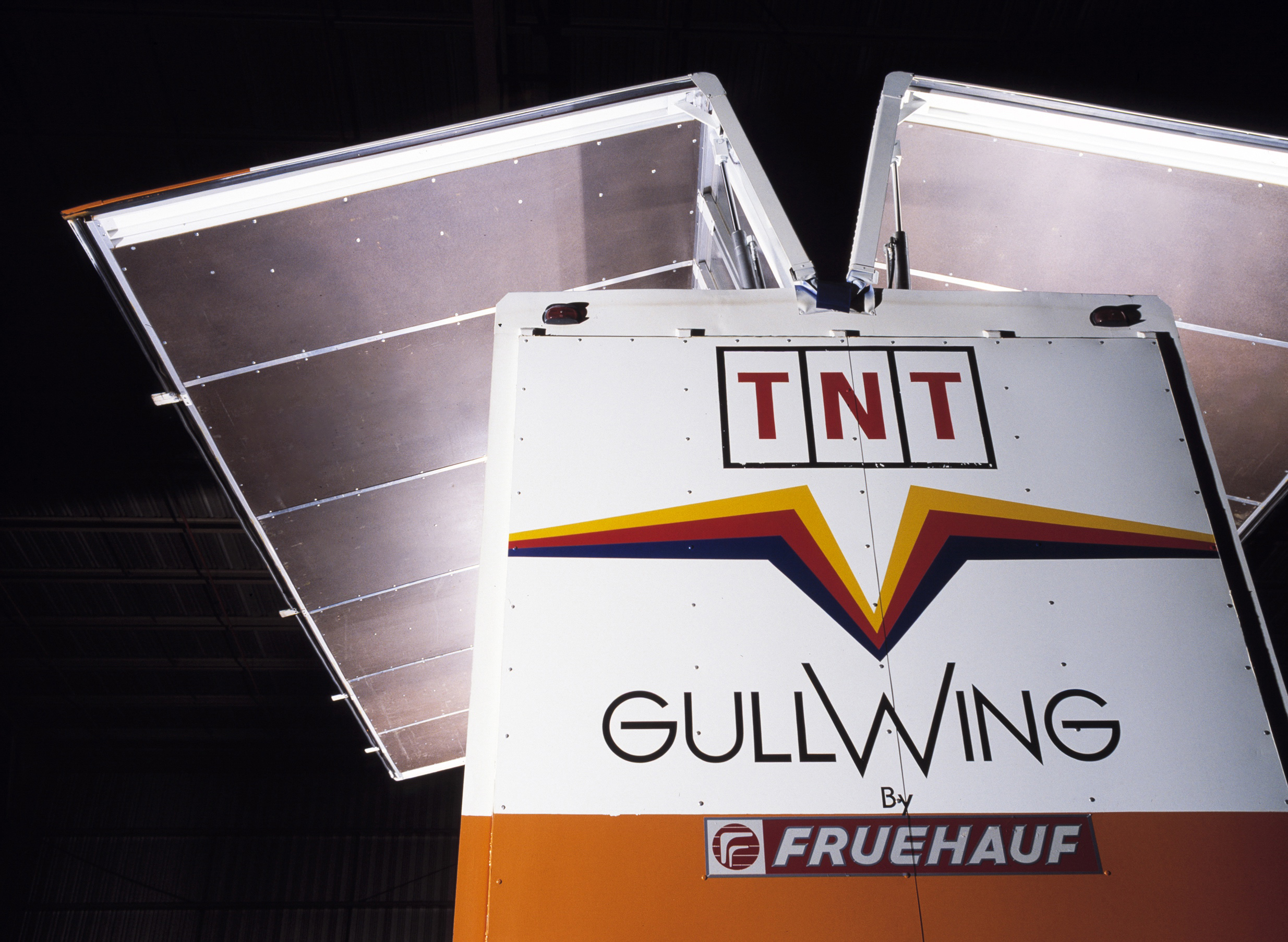
Client Fruehauf. Gull Wing Truck photographed at a factory in Footscray. Prototype. The advent and popularity of ‘canvas curtains’ for the sides of trucks meant the gull wing never eventuated. Bronica 6-45 colour transparency off-cut from the rolls of film sent to the client. Circa 1984. Julie Millowick archive, State Library of Victoria
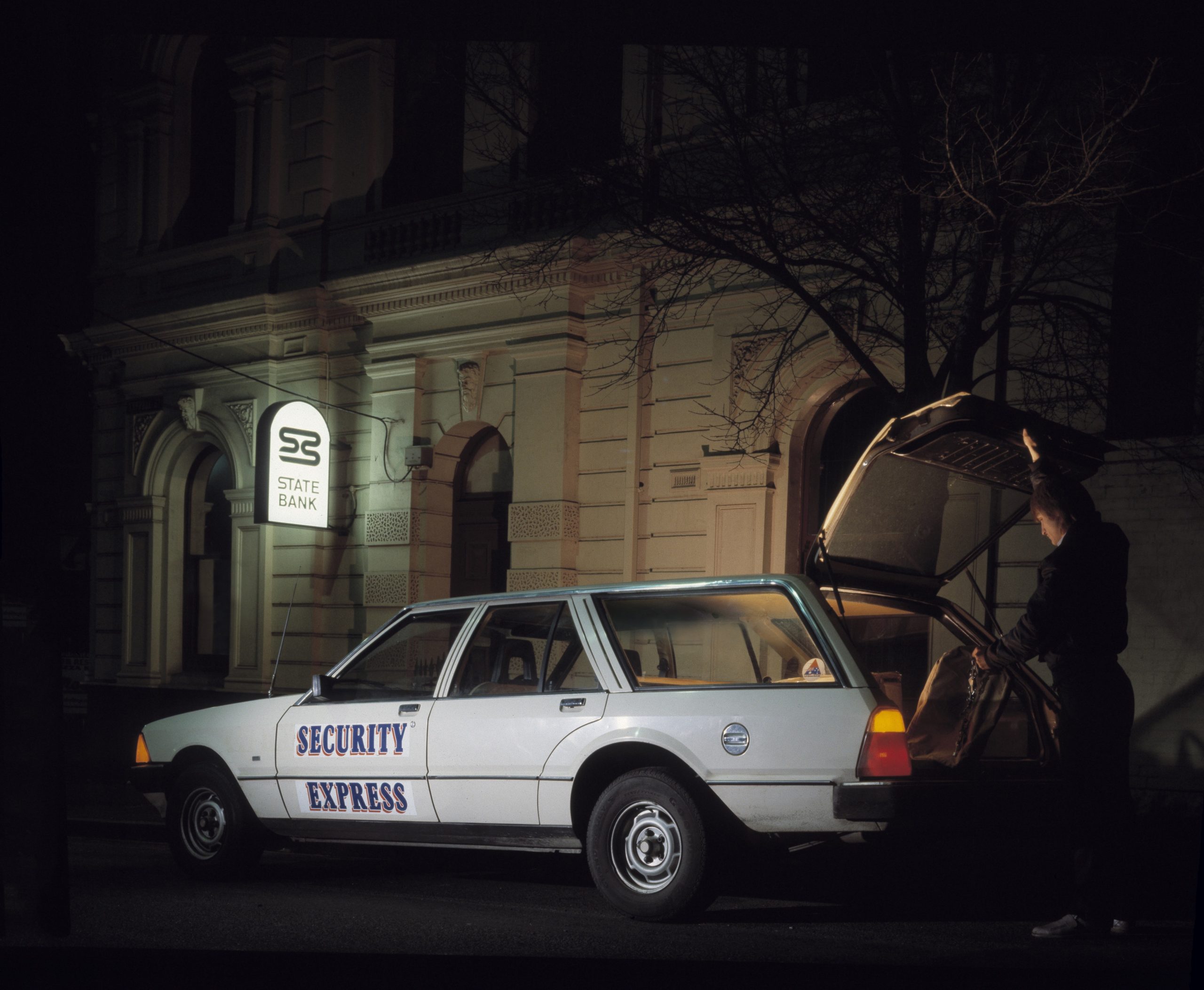
Security Express a subsidiary of Mayne Nickless. The assistant and I followed the employee as he drove through the night to each of his locations. We had to work EXTREMELY quickly. In this instance the Bronica 6-45 is on a tripod connected to a Metz flash [with a long synchronisation cord] placed on the footpath behind the vehicle. It gives subtle illumination to the building and separation of the vehicle from the background. Another Metz flash [with slave unit attached] is on the floor of the back hatch of the car that illuminates the face of the employee. The camera exposure was set for the sign and the Metz’s output [measured with a flash meter] adjusted to make everything look ‘natural’. I LOVED this type of photography and the pressure to work extremely quickly. Off cut from the rolls of colour transparency. Assistant Mark Coulson. Carlton, 1980’s. Julie Millowick archive, State Library of Victoria
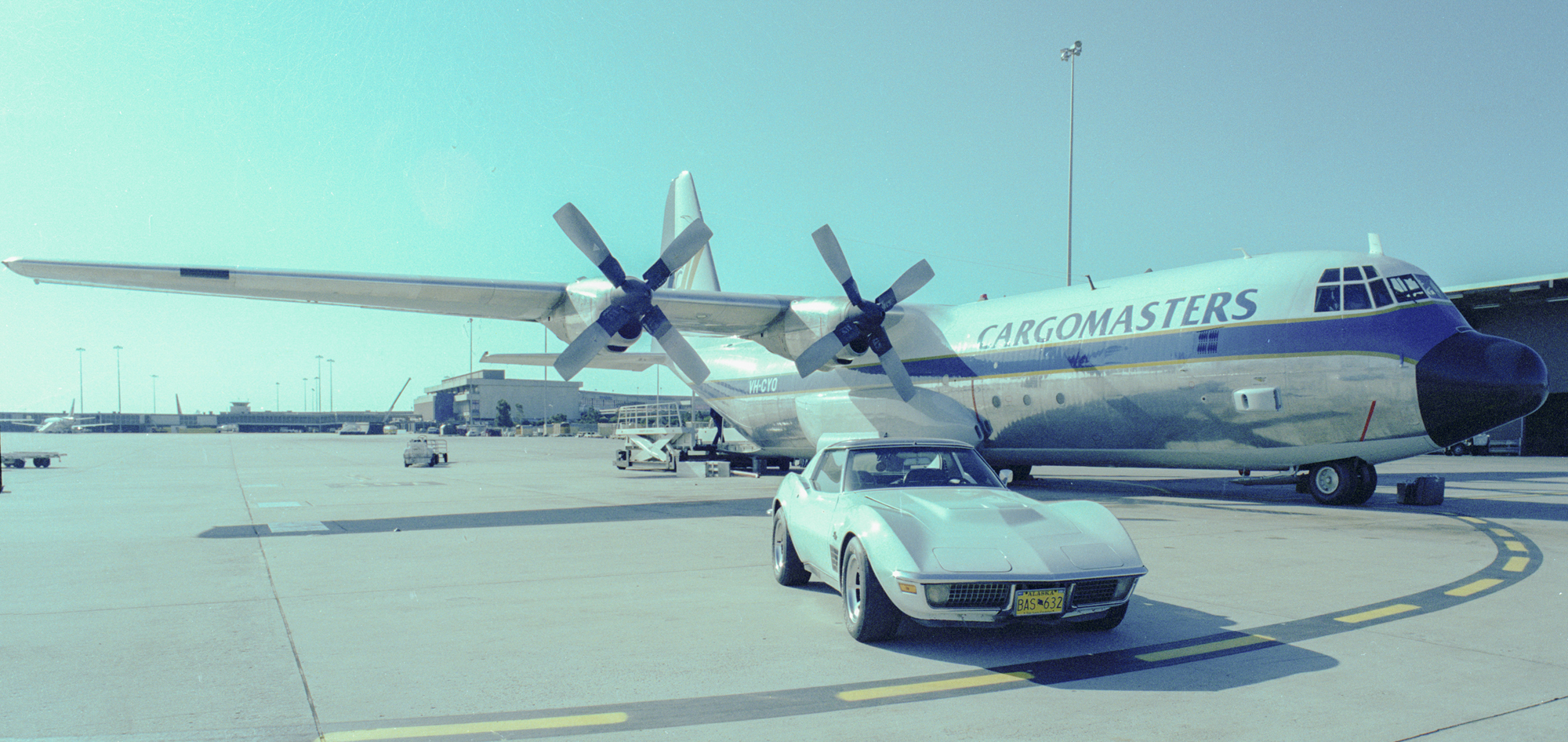
Client Cargomasters. First non-military commercially registered Hercules aircraft to land in Australia. Tullamarine Airport. I had made the expected photos [landing etc] then the Corvette was driven out of the plane for me to photograph. Extremely strict rules [enforced by the person assigned to me] about where I could move. Unusually it was colour negative which has deteriorated. 1982 Bronica 6-45
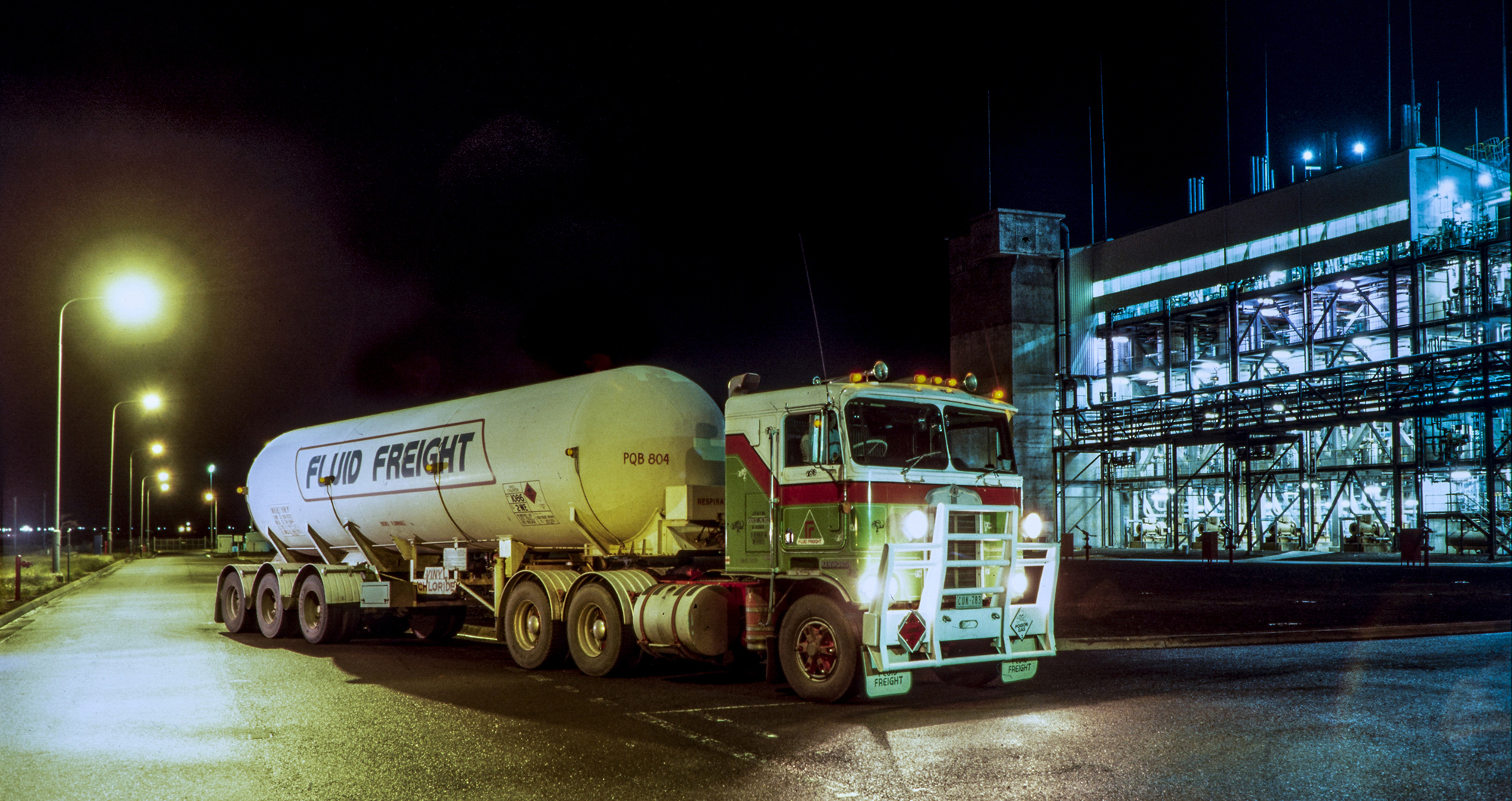
Client Fluid Freight a subsidiary of Mayne Nickless. The six axle tanker drove down from Sydney and we had 20 minutes to photograph it before it was unloaded, driver change, and driven back to Sydney. The assistant, Steven Wilkinson and I arrived about 30 minutes prior. I decided where I wanted the truck to be. Worked out the exposure of the location and what we would have to balance the 2 Metz flashes to when we lit the truck. Colour transparency with a tolerance of 1/3 to ½ a stop. The truck arrived, I directed it into position then with a long exposure assistant Steven Wilkinson walked very quickly through the photograph firing both Metz flashes [he carried the battery packs on his shoulders]. The added lighting ‘lifted’ the tanker without making it look un-natural. This is the single off-cut of colour transparency from the job. Very difficult to scan successfully. Laverton, 1980’s, Bronica 6-45. Julie Millowick archive, State Library of Victoria
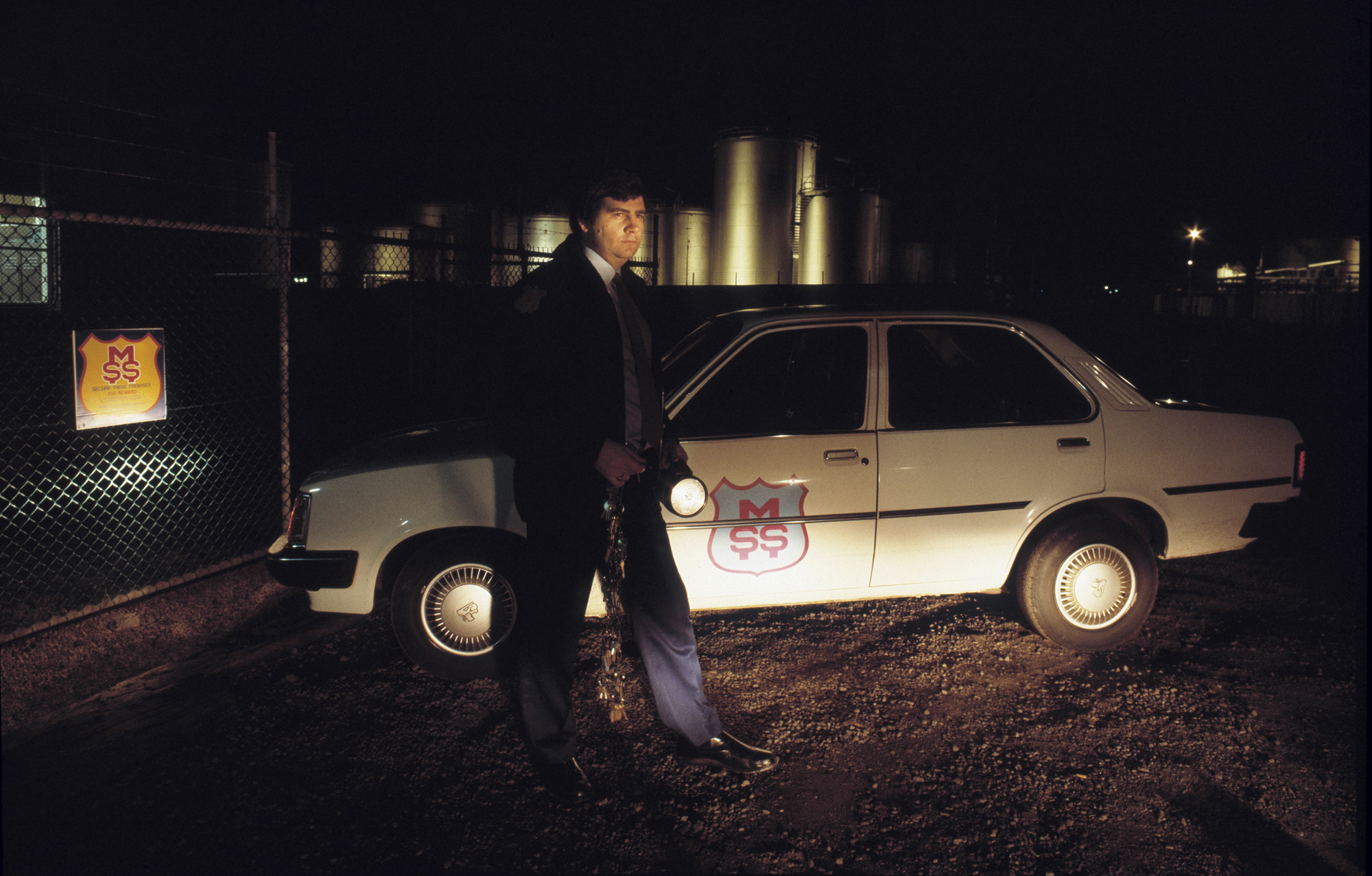
Client MSS security a subsidiary of Mayne Nickless. My assistant Mark Coulson and I followed the MSS employee through the night as he ‘did his rounds’. We had to work very quickly. In this instance my car headlights are lighting up his car. His car headlights are illuminating the MSS sign. Mark is off to the right with a Metz connected to my Bronica 6-45 [colour transparency] with a long synchronisation cord. The Metz has a long focusable ‘spot’ on the head allowing us to only illuminate the employee’s face and not the whole body. The employee’s torch is on but not illuminating anything, just giving atmosphere. To ensure the lighting was balanced to how I wanted the photo to look I used a lunasix light meter to measure available light and a flash meter to measure the light on the employee’s face. Long exposure to include the petroleum tanks in the background. Laverton, early 1980’s. Julie Millowick archive, State Library of Victoria
![VAC 10071 William [Bill] Akers Theatres Planning Co ordinator gives a guided tour of the Melbourne Concert Hall to a group of retired Ballet Dancers. Even though it is summer the weather was very wet and the building site turned to mud with disastrous re](https://juliemillowick.com/wp-content/uploads/2025/03/038_1982-VAC-C10071_E_Bill-Akers-Theatres-Planning-Co-ordinator-gives-ConcertHall-tour-to-retired-Ballet-Dancers-rescues-MaryonLane_JulieMillowick1982-copy_1.jpg)
Client Arts Centre Melbourne. William [Bill] Akers AM, Theatres Planning Co-ordinator gives a guided tour of the construction site of Hamer Concert Hall to a group of retired Ballet Dancers. The summer weather was very wet and the building site turned to mud with disastrous results. Bill carries retired ballerina Maryon Lane across the quagmire. 1982 Bronica 6-45 Julie Millowick archive, State Library of Victoria
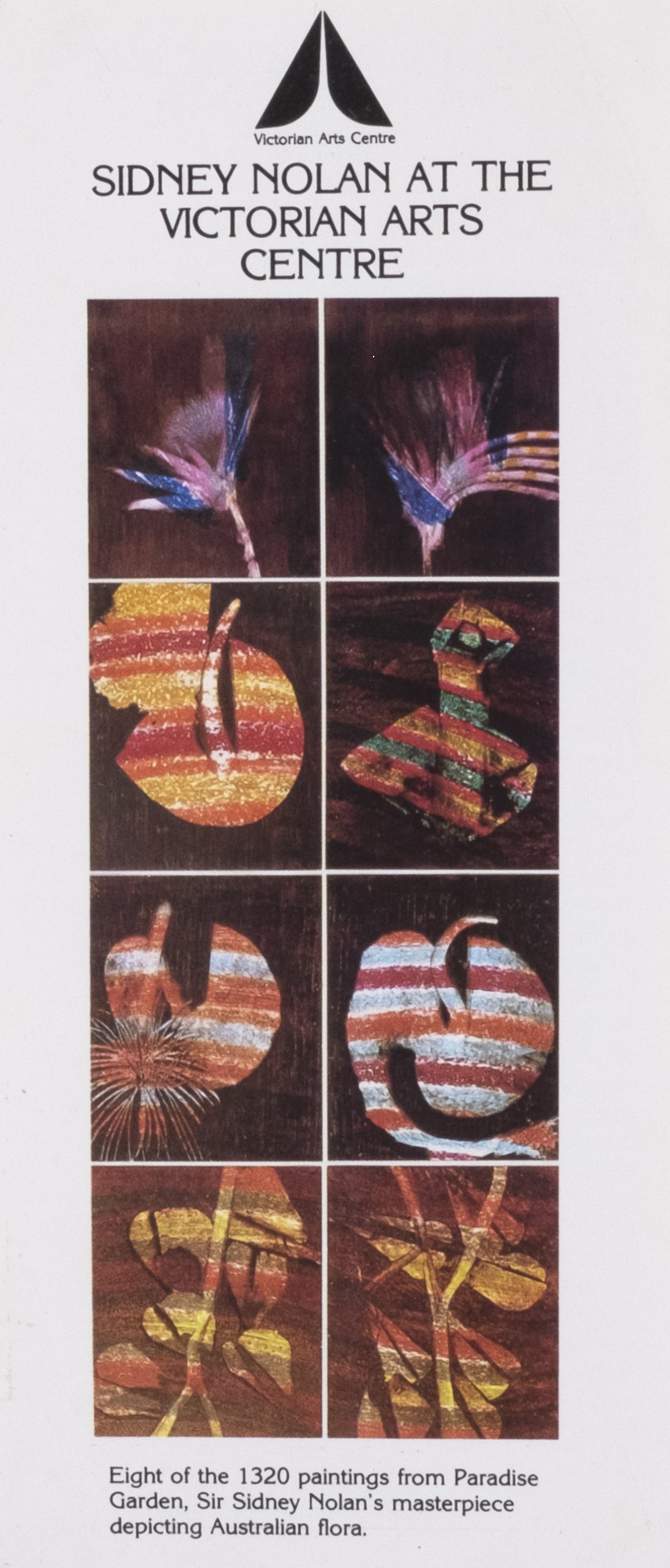
Client Arts Centre Melbourne. Tear sheet. Eight of the 1320 Sir Sydney Nolan paintings from ‘ Paradise Garden’. All images photographed framed behind glass. Absolutely NO post processing [which was 100% impossible at the time]. Ric Wallis, RMIT graduate with whom I shared studio space at Peter Barr & Associates showed me the technique of photographing artwork/objects behind glass with no reflections. I taught the technique to many students and use it to this day. Bronica 6-45 colour transparency.
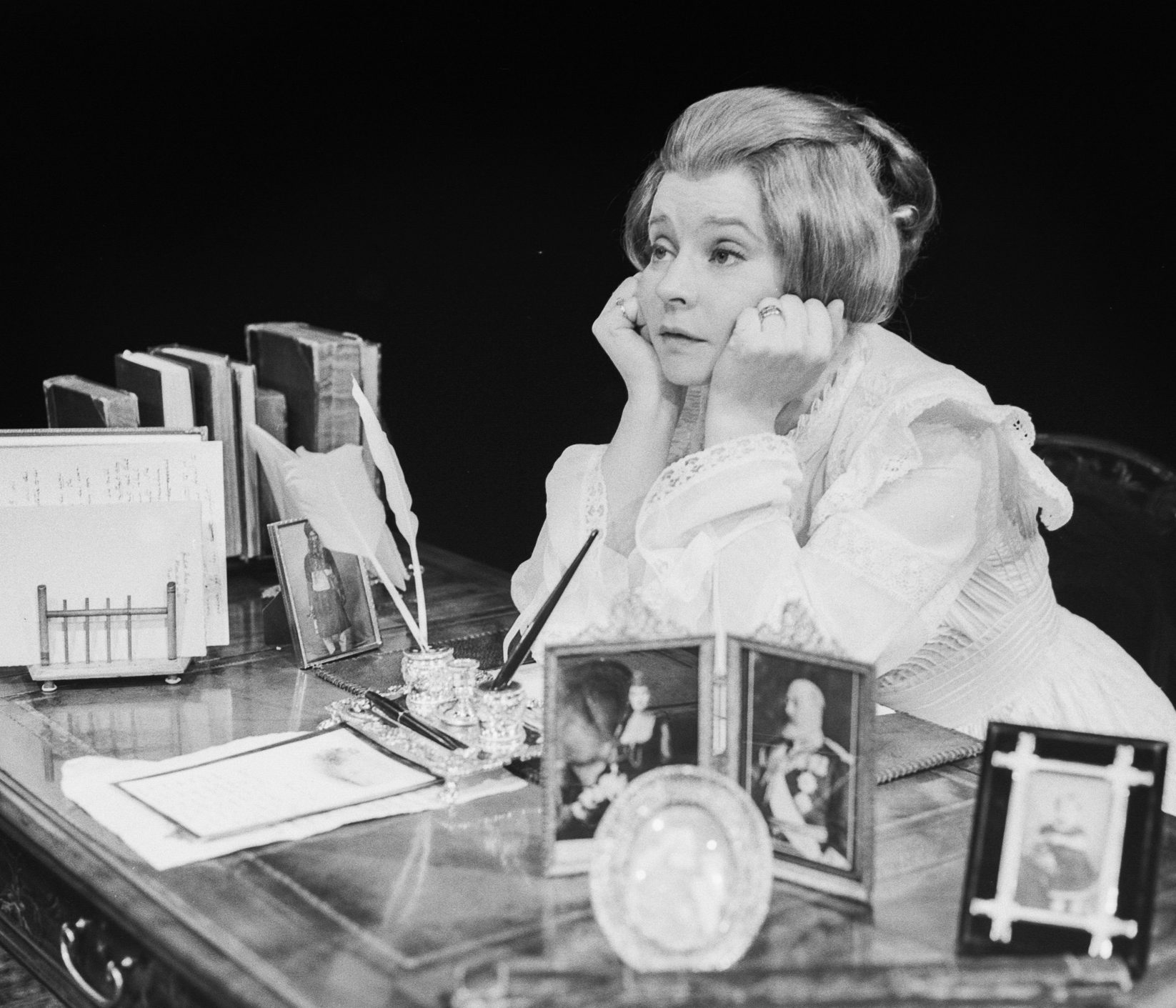
Client Arts Centre Melbourne. An Evening with Queen Victoria starring Prunella Scales in the title role. At least 3 times a week for several years I photographed performances for this client. Cumulatively, over a 40 year career I have photographed several thousand performances but this is the only time I had the luxury of photographing a dress rehearsal. 1983 Bronica 6-45 uprated ISO. Julie Millowick archive, State Library of Victoria
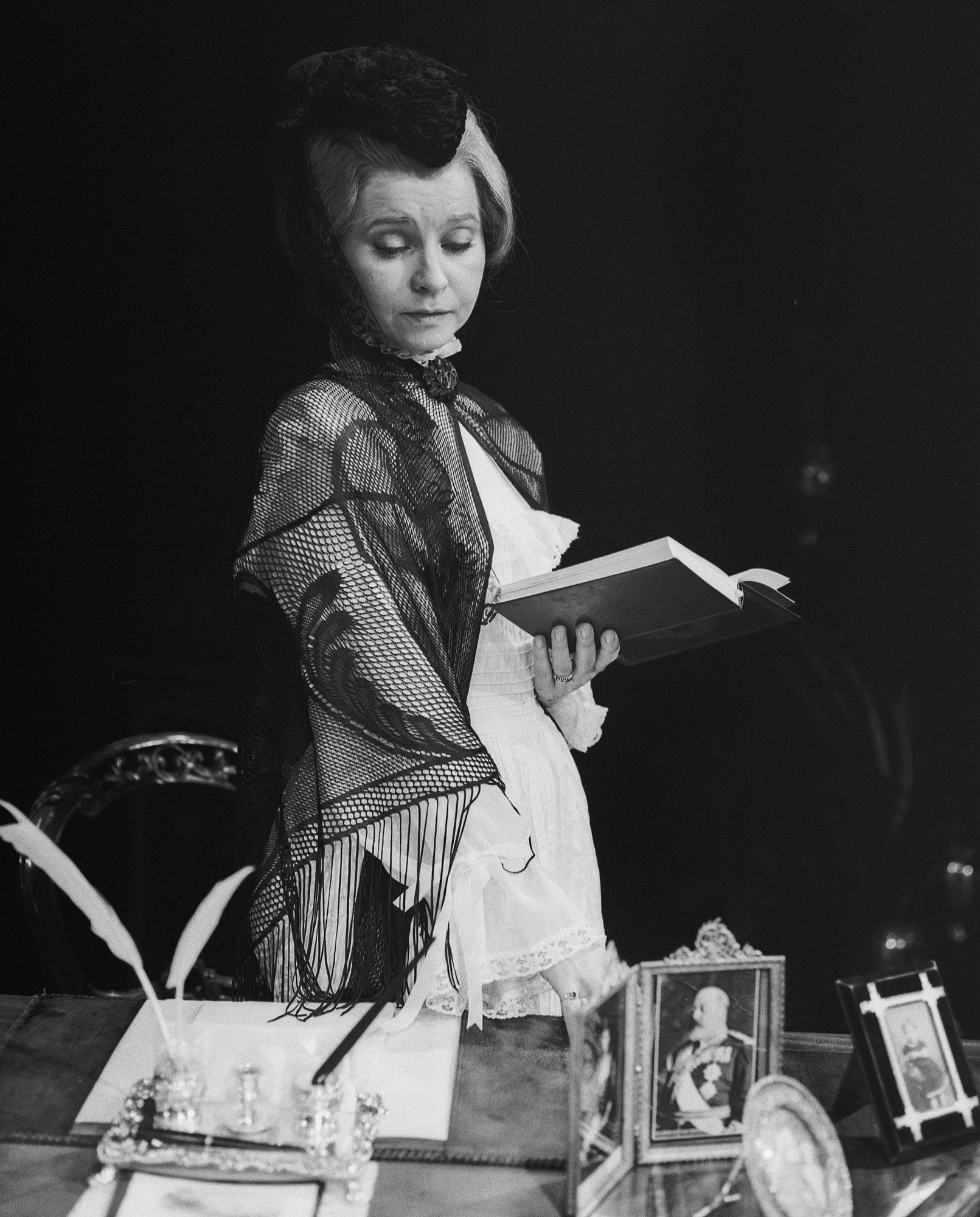
Client Arts Centre Melbourne. An Evening with Queen Victoria starring Prunella Scales in the title role. At least 3 times a week for several years I photographed performances for this client. Cumulatively, over a 40 year career I have photographed several thousand performances but this is the only time I had the luxury of photographing a dress rehearsal. 1983 Bronica 6-45 uprated ISO. Julie Millowick archive, State Library of Victoria

Client Westpac. 333 Collins Street, original Commercial Bank. Westpac Bank at time of photos. The team in charge of dismantling furniture and fittings relaxing in the Managing Director’s office, Melbourne, 1988. 5×4 Sinar, Positive/Negative Polaroid Julie Millowick archive, State Library of Victoria
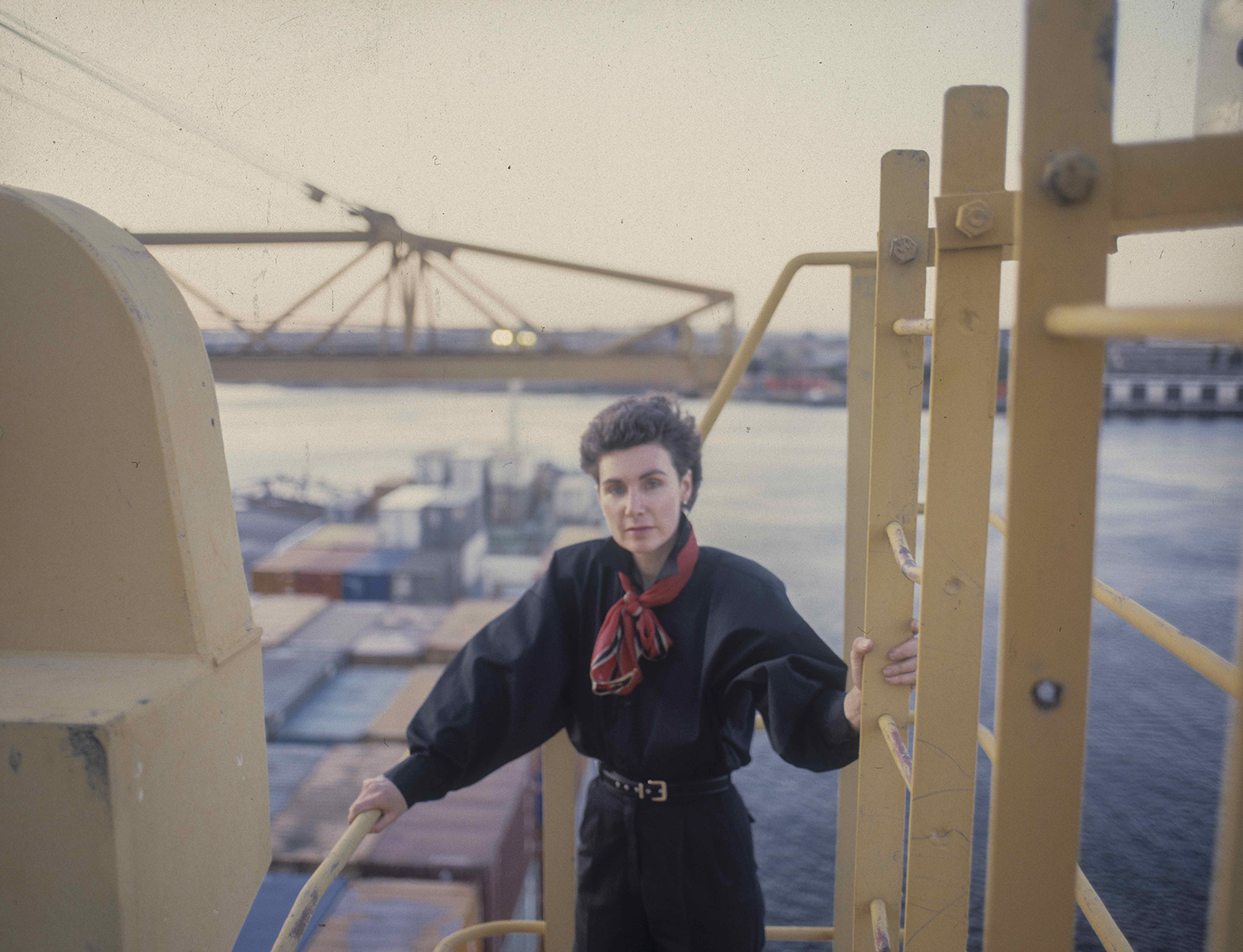
Client Maye Nickless. Intermodal a subsidiary of Mayne Nickless. After completing the assignment, the ‘minder’ photographed Julie Millowick on the walkway out from the gantry and above the containers already loaded onto ships. Focus is a bit ‘out’ but that is always flattering! circa 1980’s Bronica 6-45 colour transparency
![5th Feb 1983 Luciano Pavarotti, Melbourne Concert Hall [now Hamer Hall]Julie Millowick did freelance work for the Victorian Arts Centre in the early 1980’s. Always interesting work from putting on her own personal hardhat to document the 6 weekly con](https://juliemillowick.com/wp-content/uploads/2025/03/047_VAC-Pavorotti-evicting-Julie-OriginalScan-16-bit-adjust-crop2-adjust-reflections-Pav-faceLightenSebastian-5thFeb1983-FINAL_sharpenPS-copy_1.jpg)
Client Arts Centre Melbourne. Pavarotti evicts Julie Millowick from the Melbourne Concert Hall. I photographed performances at the Concert Hall several times a week. The brief for Pavarotti was to cover the performance then with VIP’s afterwards. This was usual. What was not usual was Pavarotti signing programs. That was very special. Whilst he sat at the table doing that I thought a photo from the back of the foyer showing the hundreds of people waiting to have their programs signed would look quite impressive and probably would never happen again. So I went behind Pavarotti to the back wall and made the photo. He was actually a very very small part of it, the surrounding environment of hundreds of fans was the main point of the image. When I returned to the programme signing desk Pavarotti swung around and very loudly [he does have a very big voice] accused me of taking photos to make him look overweight. As he shouted at me I was holding the camera just down from my face, [similar to The Age photographer Sebastian Constanzo in the background], I had an automatic reflex reaction to take a photo. CLICK. Of course this made him even angrier. He then called for security [they were out in force] and demanded I be evicted from the building. All the security people knew me – I was on assignment there several times a week and each time I had to sign in. So one of the security blokes took me by the elbow and escorted me through the crowd to the big doors leading to back of house. As he did that he made very laconic, droll comments – so typically Australian – about the situation and completely defused any tension I felt. Considering I didn’t focus – it was all manual focus back then – just had a reflex reaction of pressing the shutter, the photo isn’t too bad. His hand is sharp and he is still recognisable as Pavarotti in a bad mood. Colour transparency -an incredibly unforgiving film stock – Bronica 6-45, Metz flash hand held off camera. Battery pack on my shoulder. The image was the last one on the roll of colour transparency. I cut it off and it has followed me around since 5th Feb 1983. Recently I showed it to the client, Rob Gerrand from Arts Centre Melbourne who said it should have been on the front page of The Age. I am grateful to Rob Gerrand and Arts Centre Melbourne or standing by me through the fallout from Team Pavarotti.
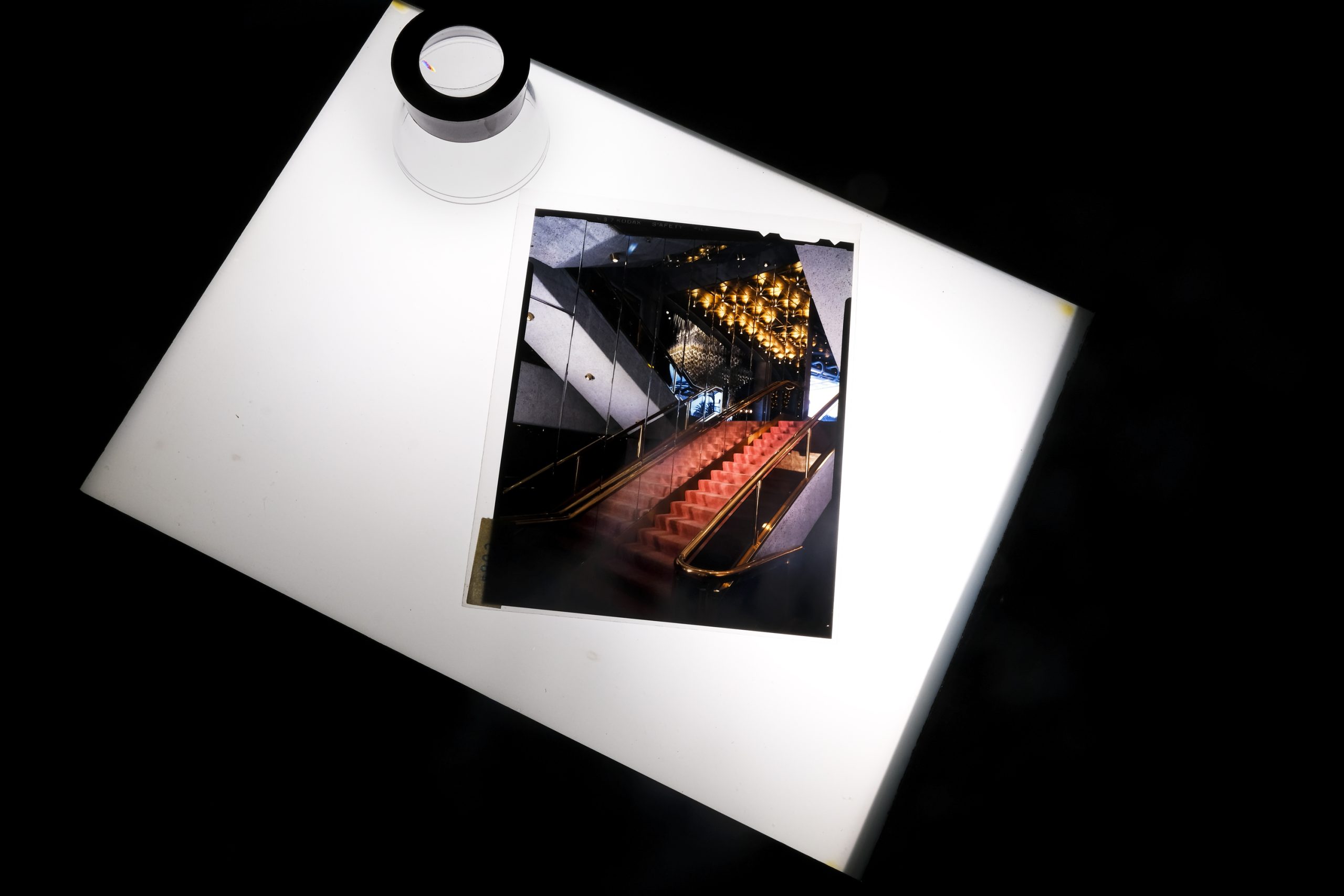
90% of my assignments were colour transparency film. An incredibly demanding film with a tolerance of 1/3rd to possibly ½ of a stop exposure error. The film, on a transparent base, created a positive image that was viewed on a lightbox with the aid of a loupe. The image was unique and could not be changed in any way. At all. Once the film left the studio and sent to the client, that was it. It was never seen again. Years and years of images I created have disappeared.


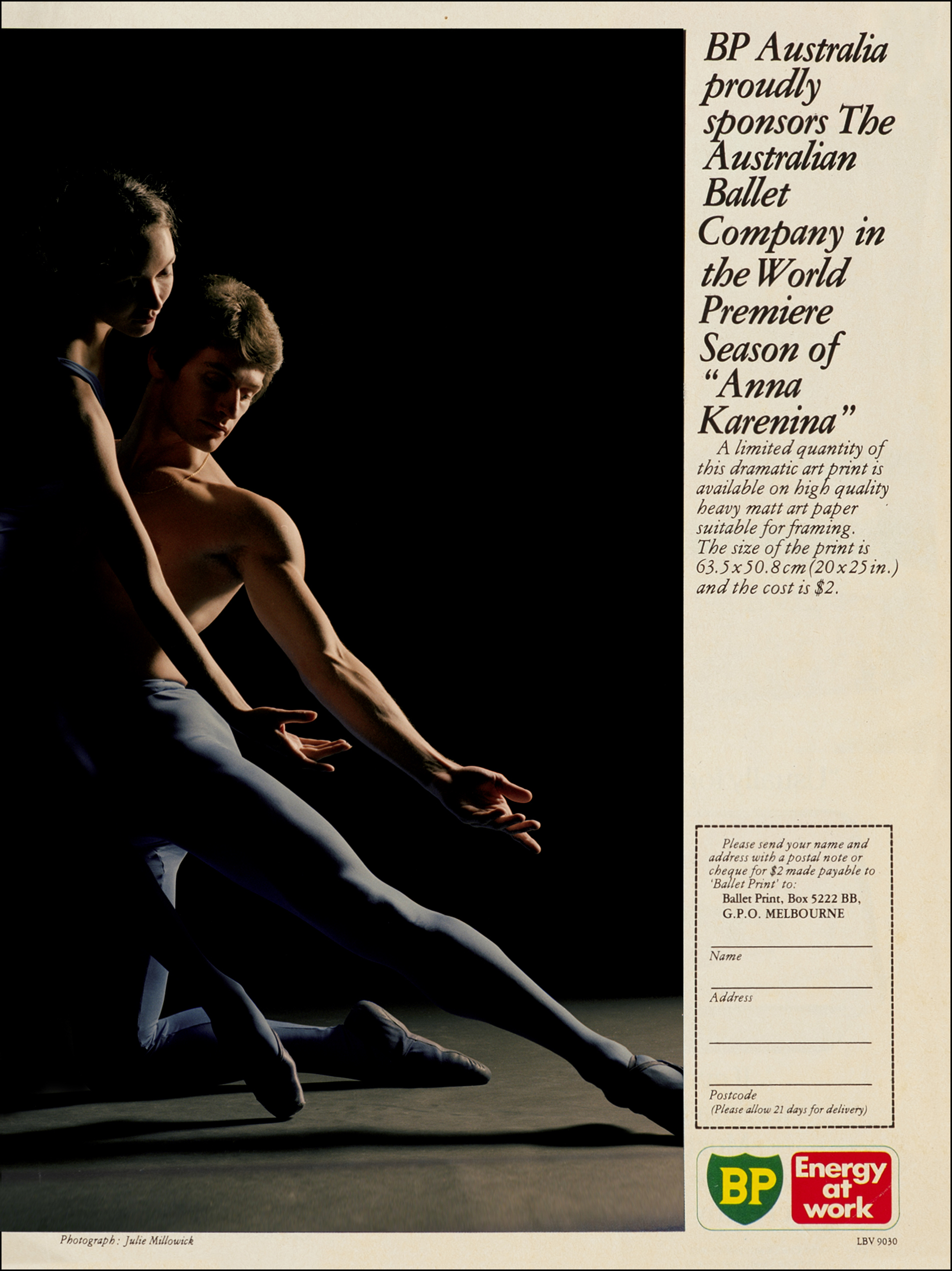
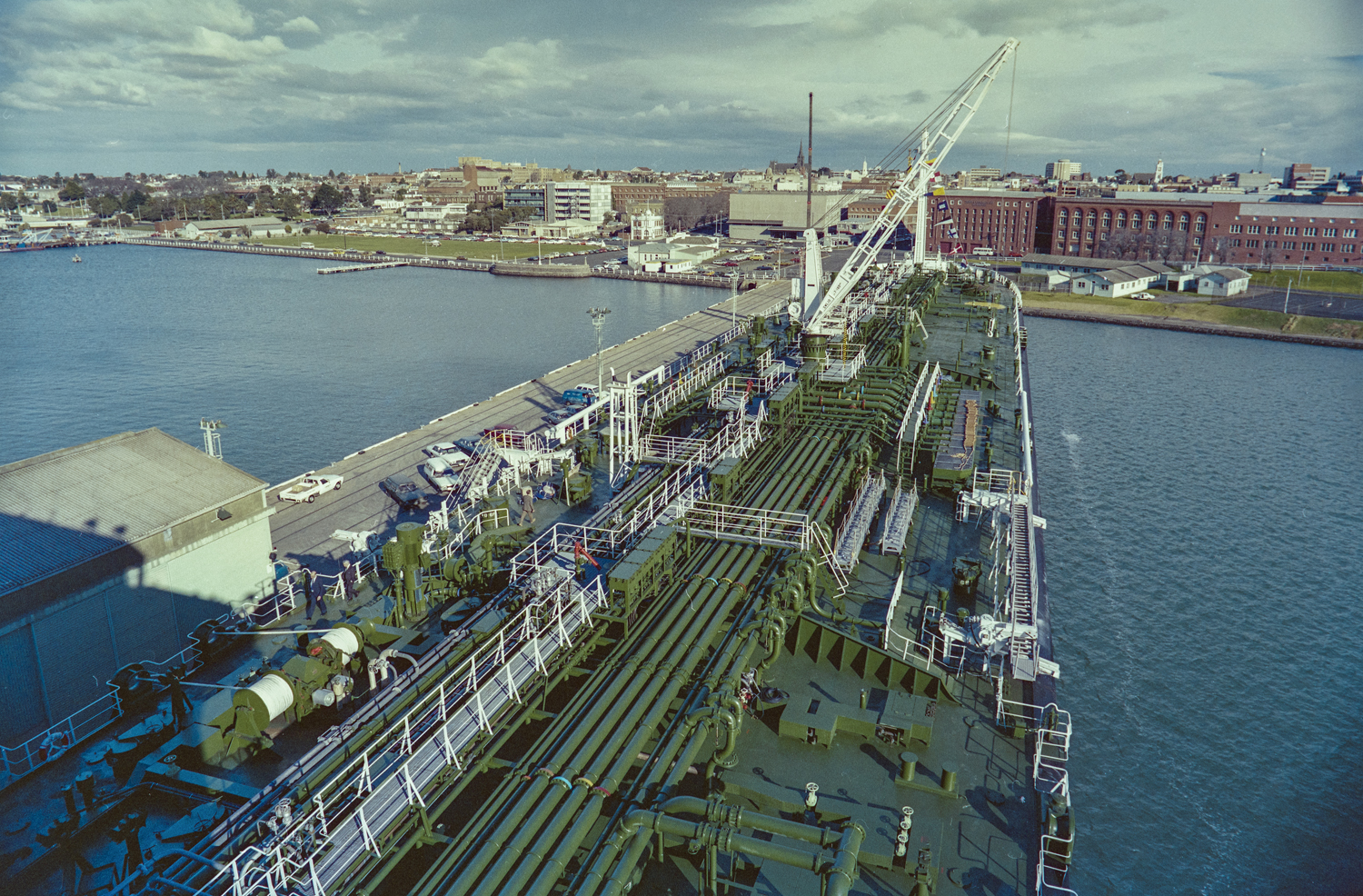
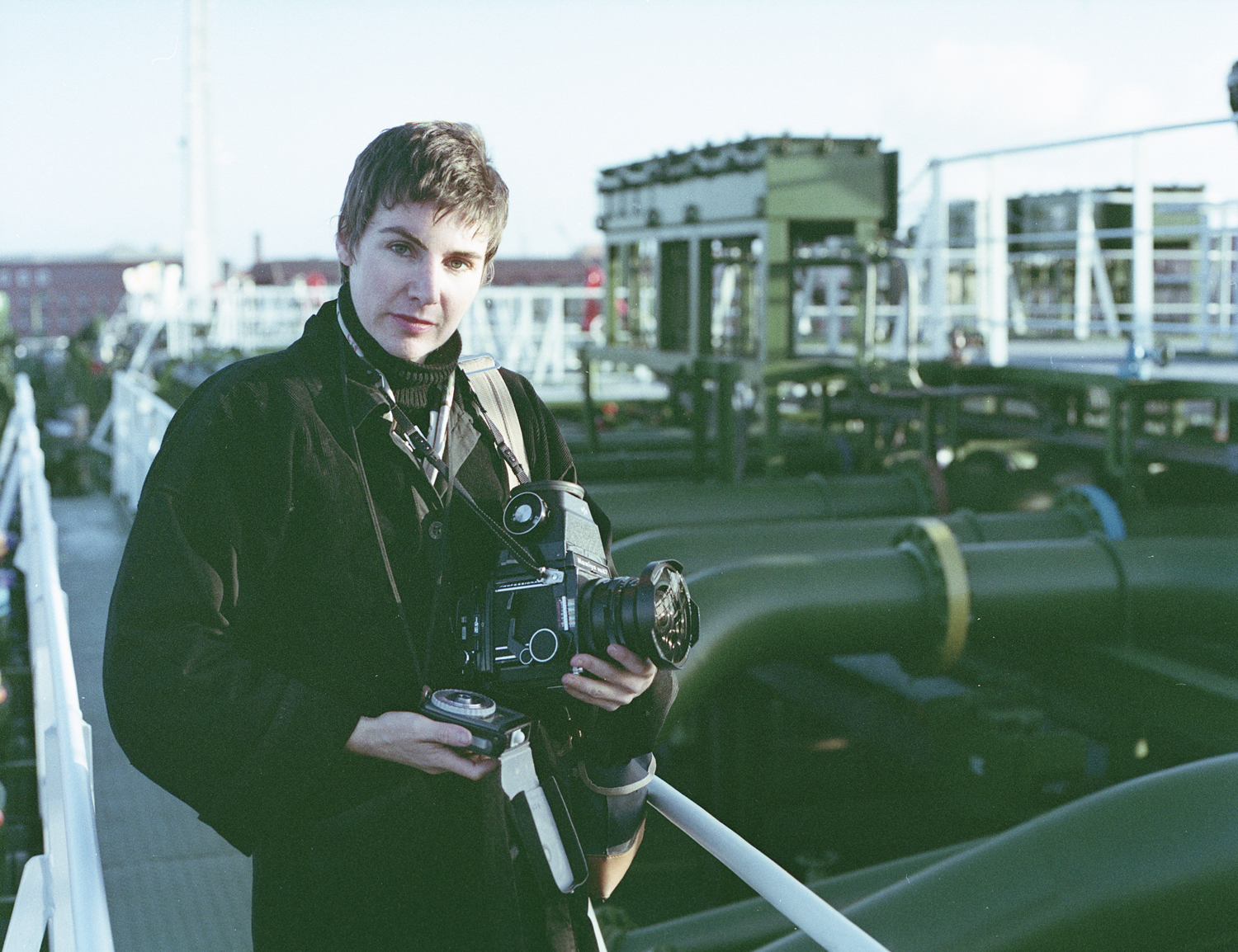
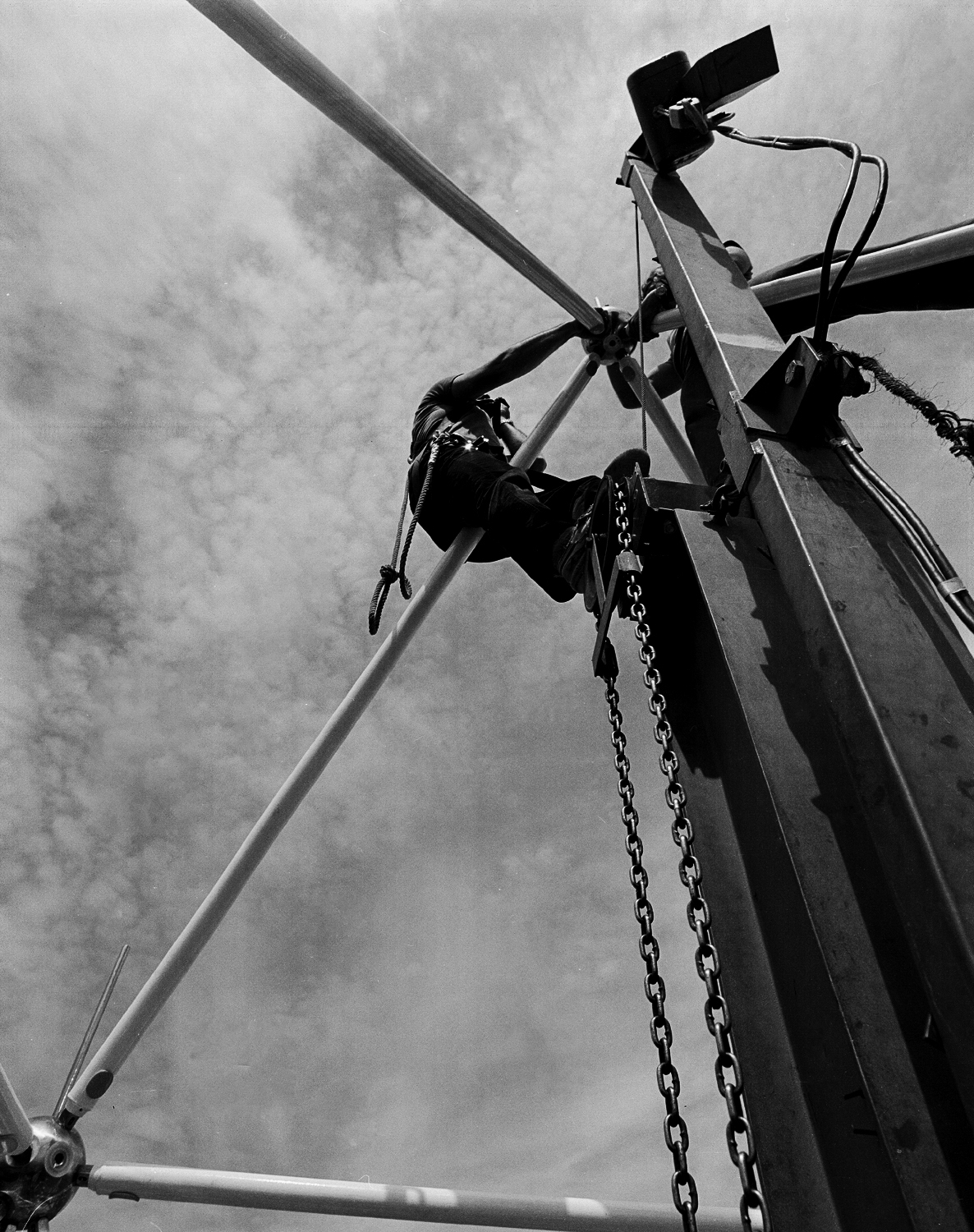
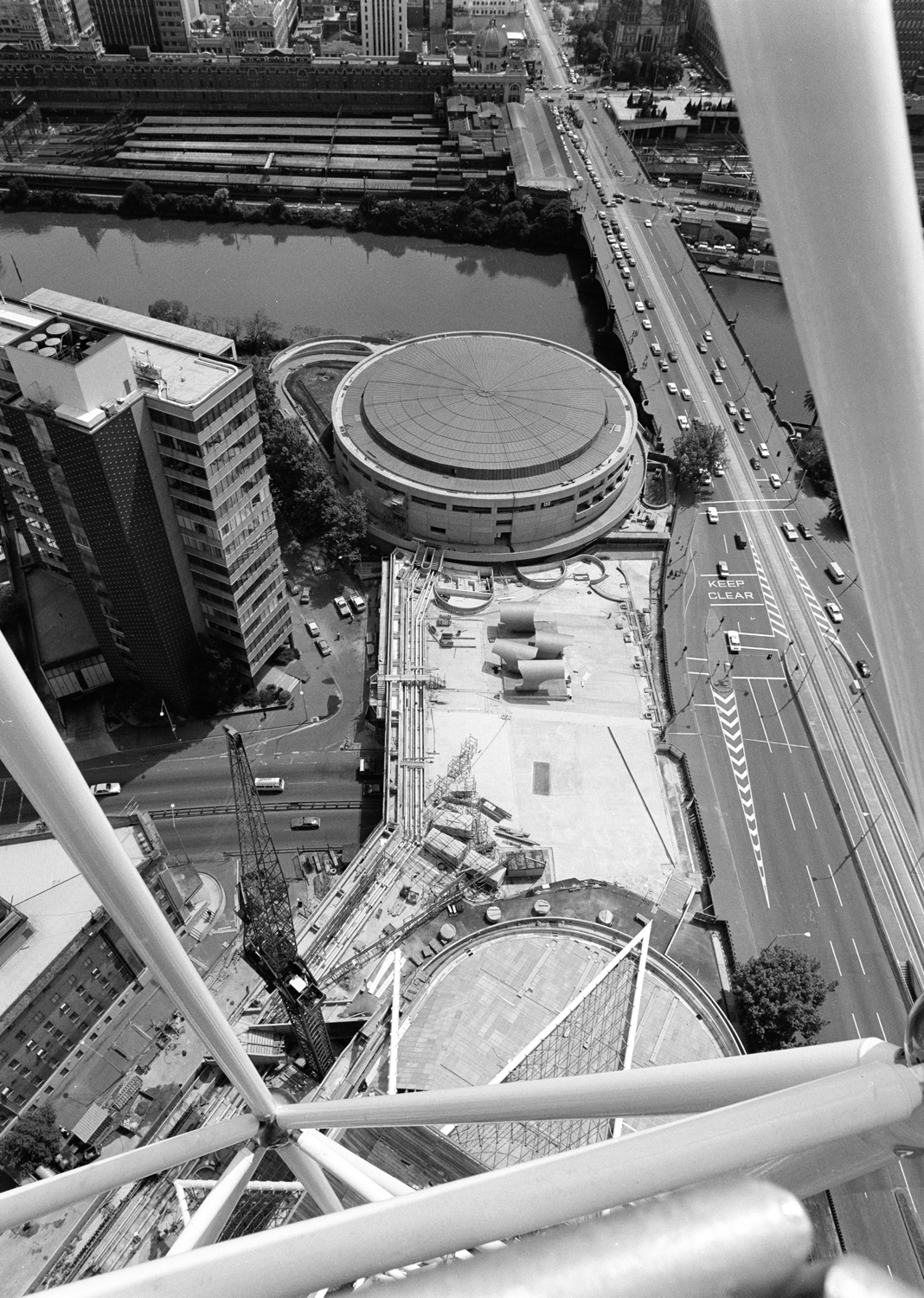
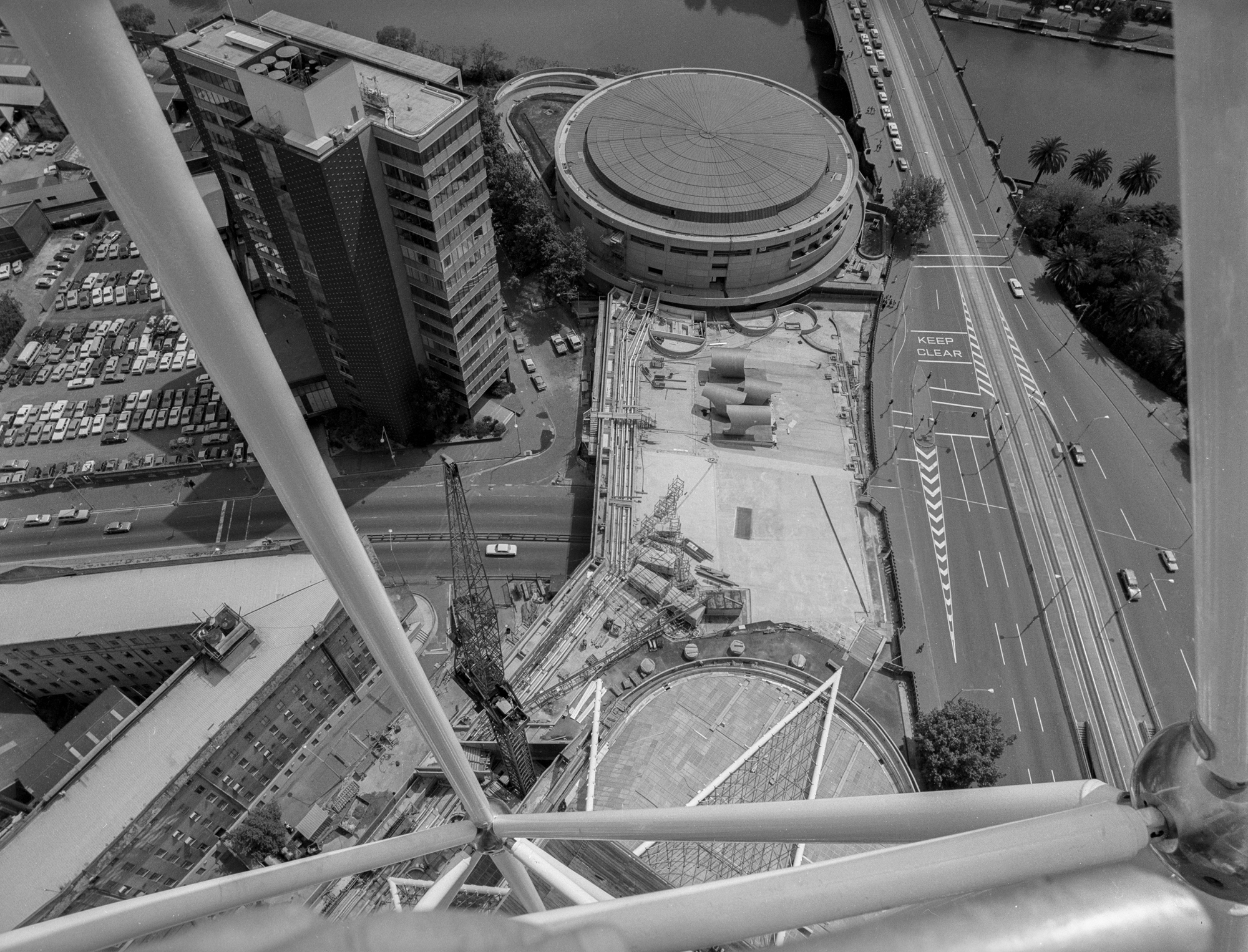
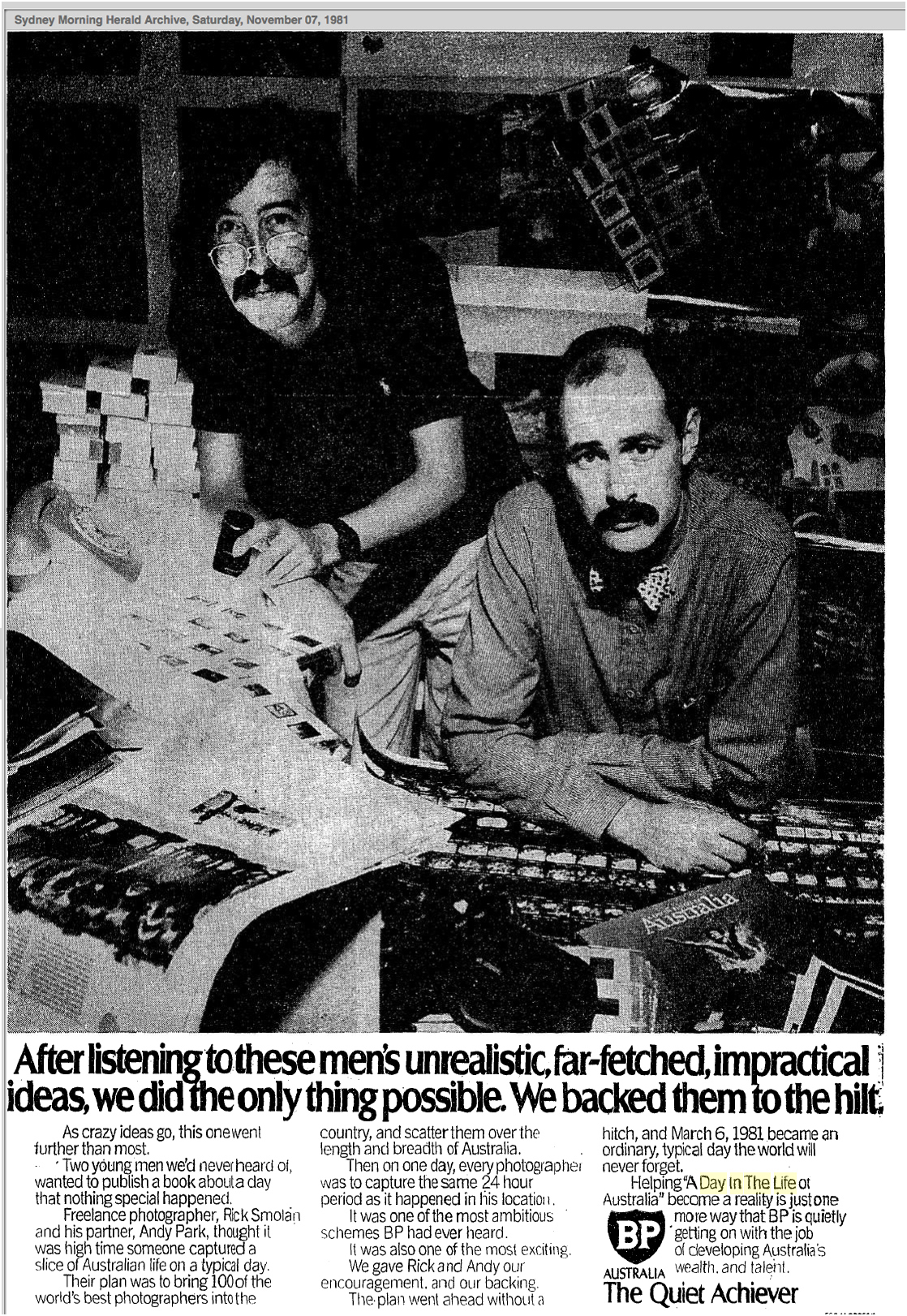

![ADITLA [A Day in the Life of Australia], [Rick Smolan, Andy Park] 100+ Photographers the majority from overseas descendeded on Australia on March 6, 1981 and covered as much as possible. The idea was Rick Smolan’s and this was the first of many coun](https://juliemillowick.com/wp-content/uploads/2025/03/018_1981-ADITLA-ADayintheLifeofAustralia-GrantvillePetrolStation_113-17_28_JulieMillowick-6March1981-copy.jpg)
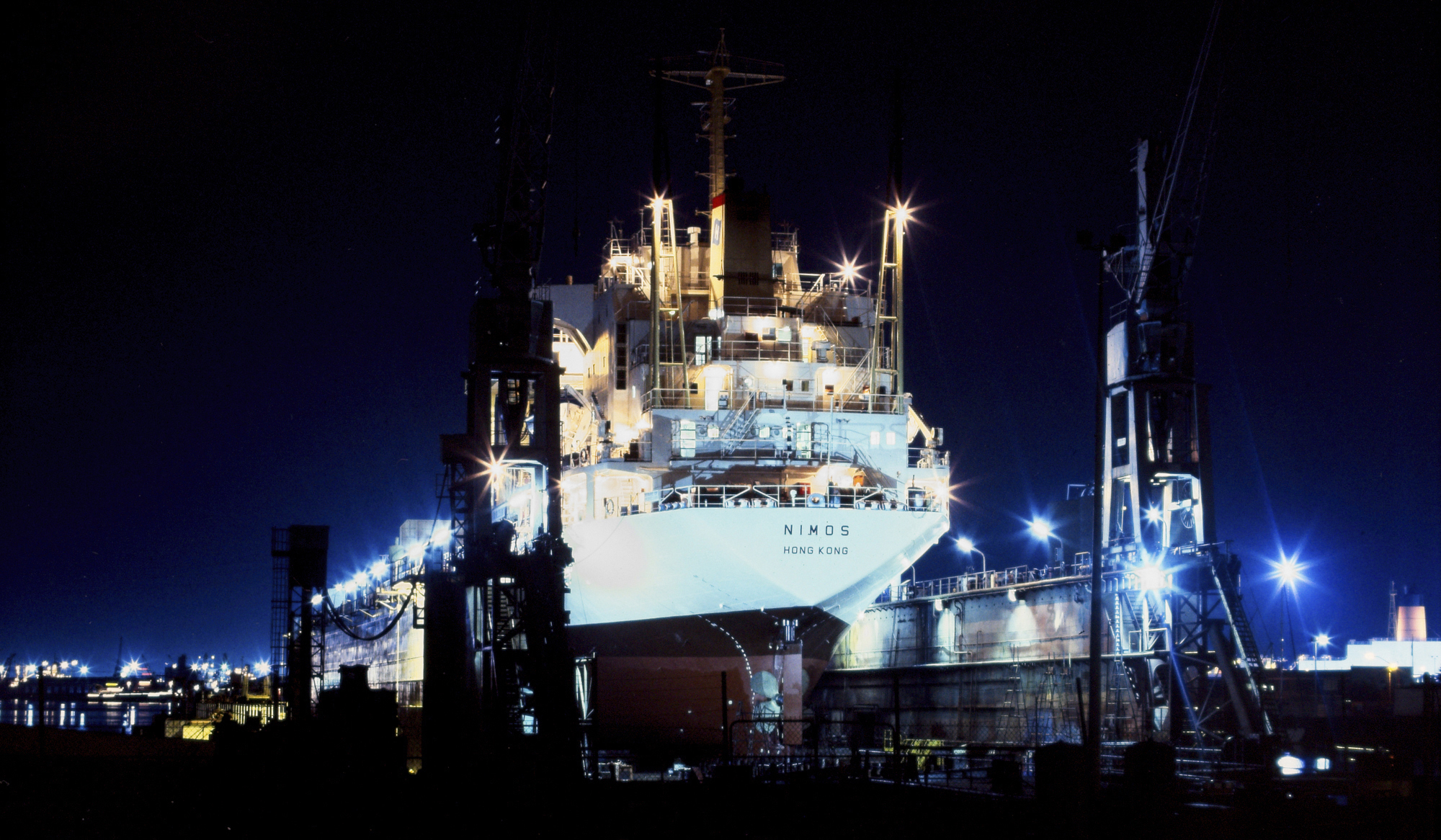
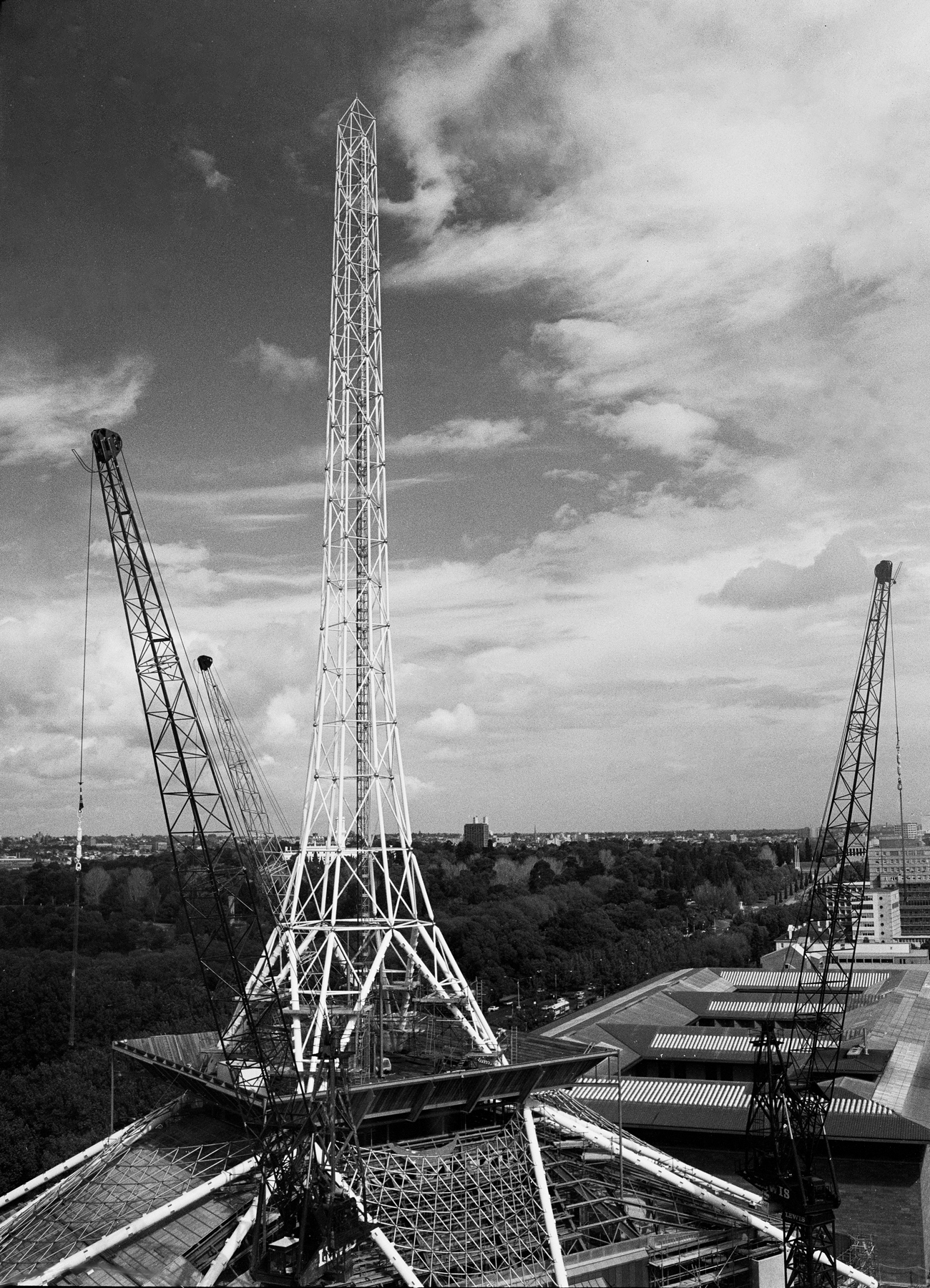


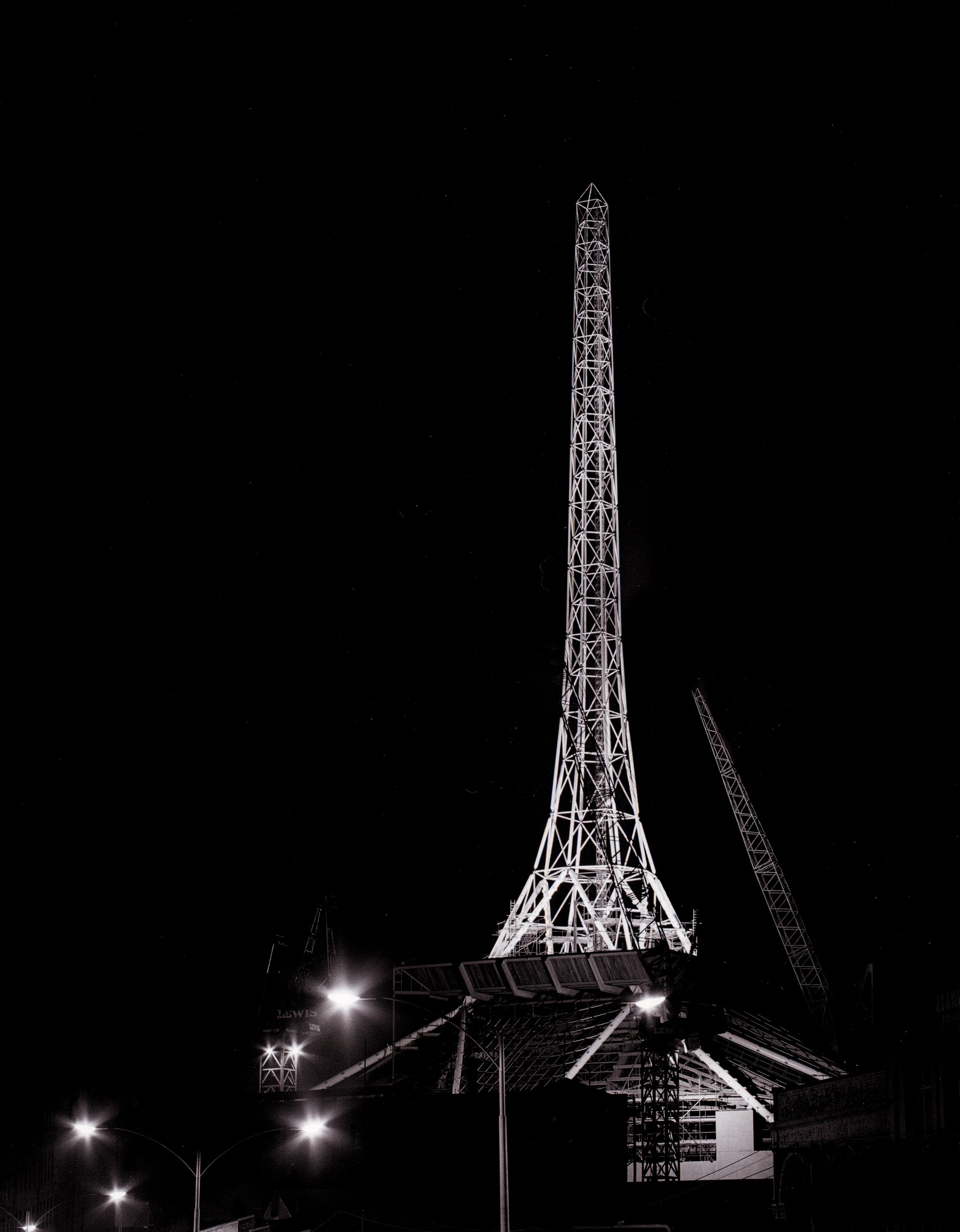


![Job Number 10208 loading horses One of the Horses is Gammalite, (1976 – 21 December 2006) was an Australian bred Standardbred racehorse who was the first Standardbred to win A$1 million in Australia.[1] He was regarded as one of Australia's most succe](https://juliemillowick.com/wp-content/uploads/2025/03/031A_1982-Cargomasters-Hercules-HorseTransport_H10208_D_JulieMillowick-NovDec1982-sharpen.jpg)

